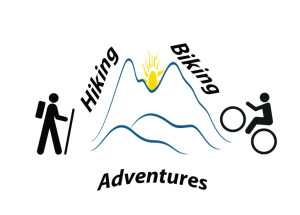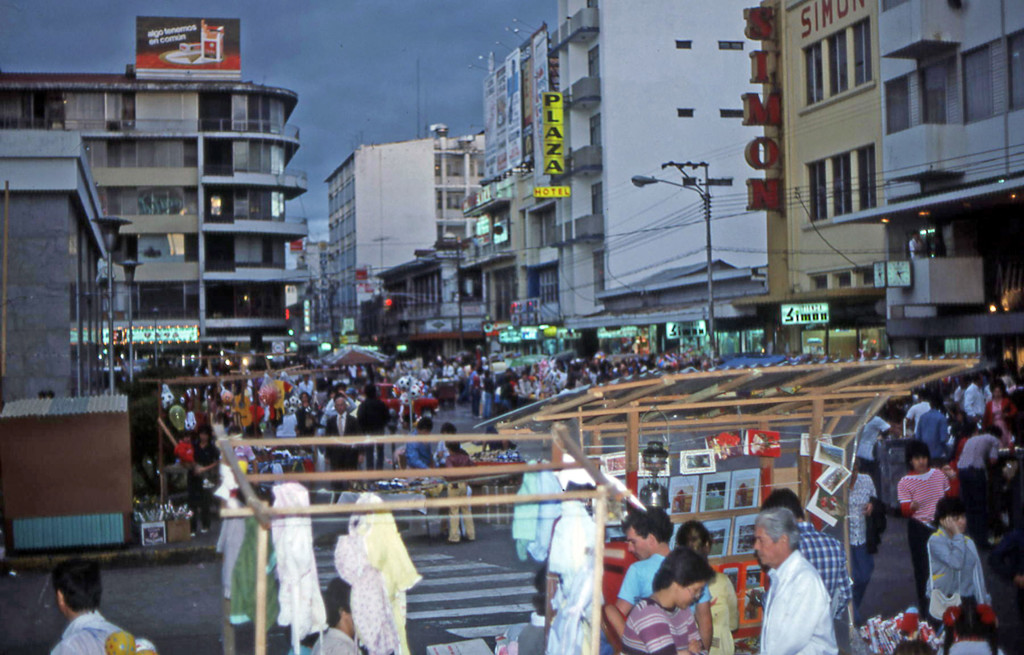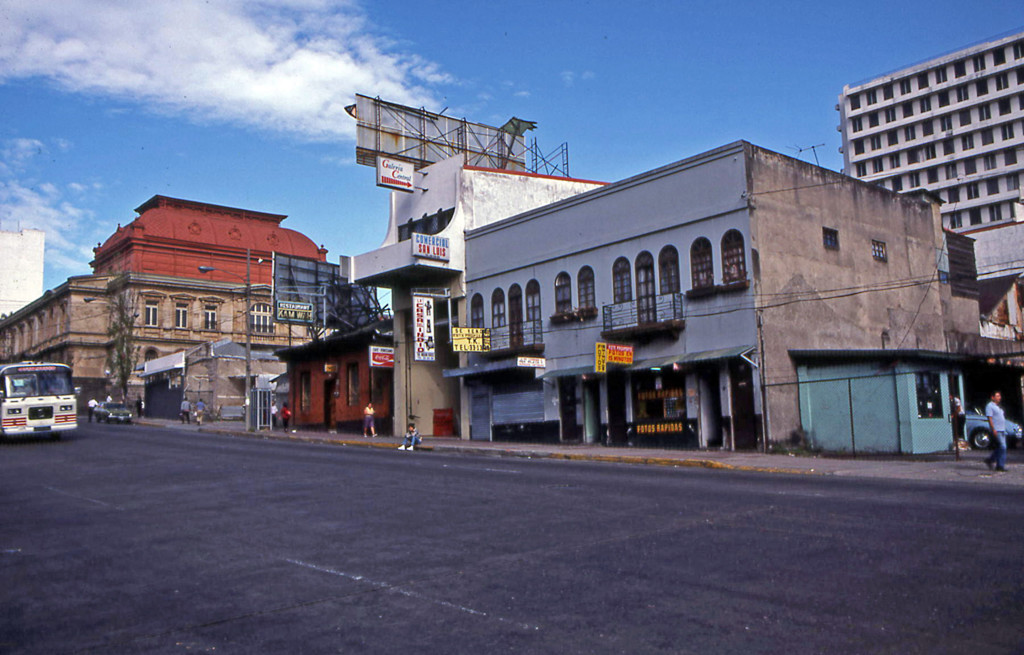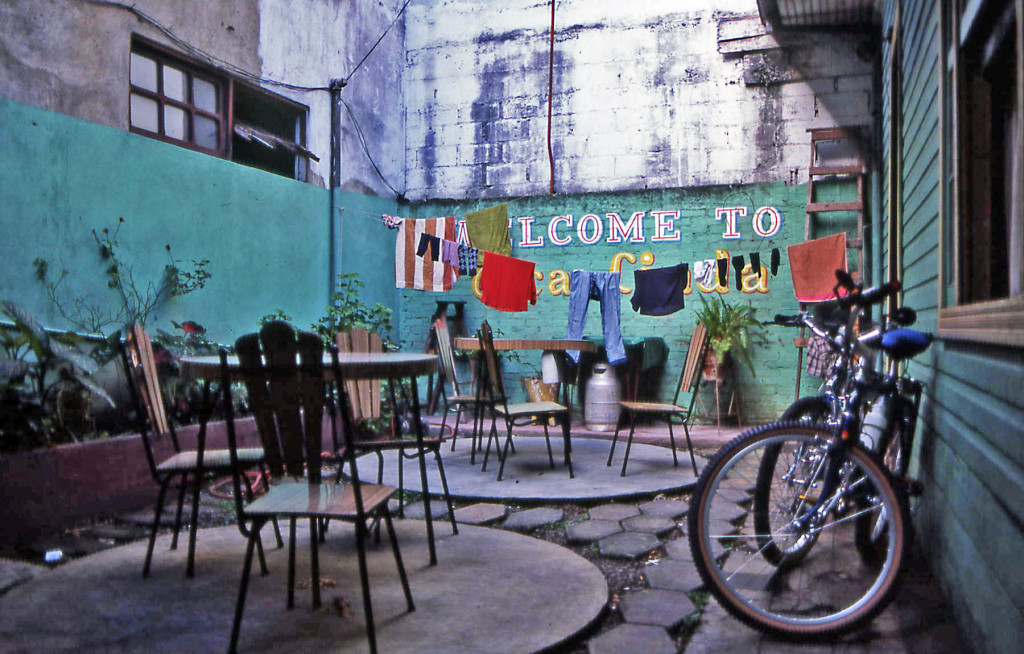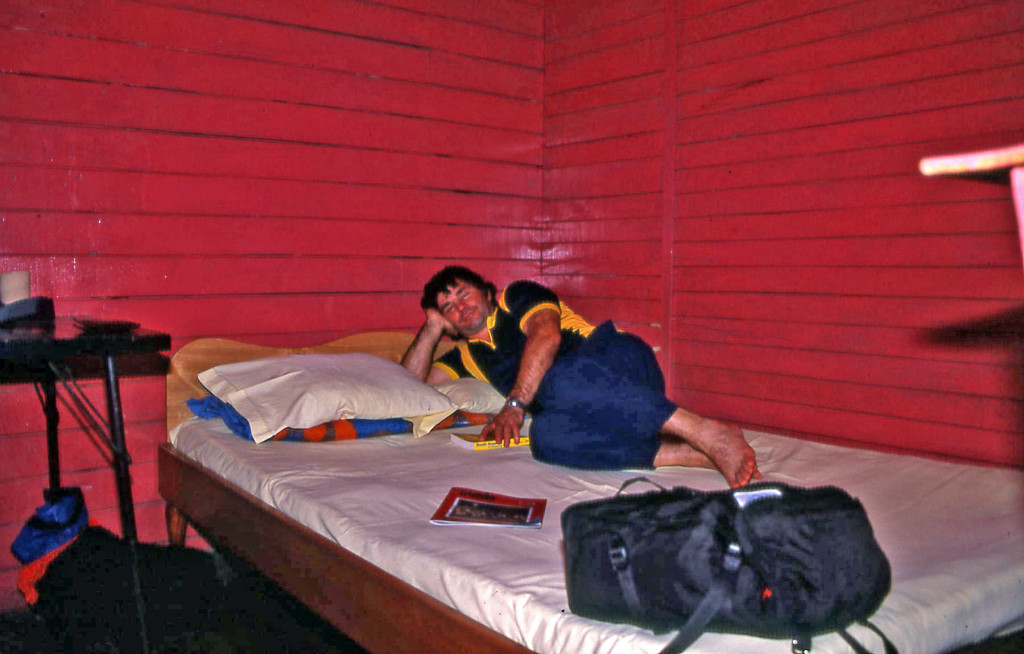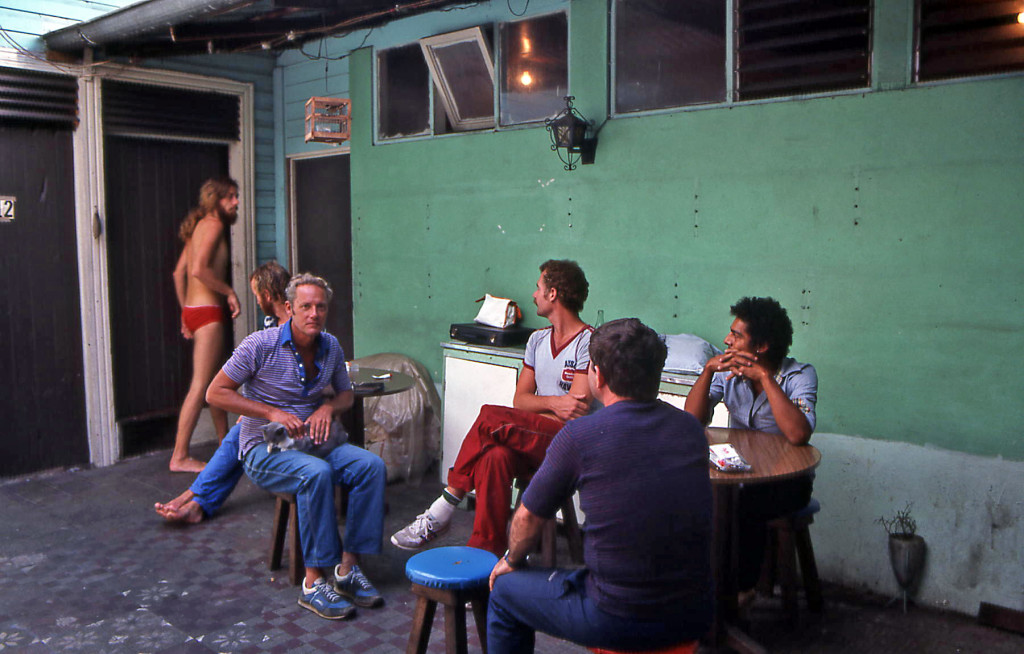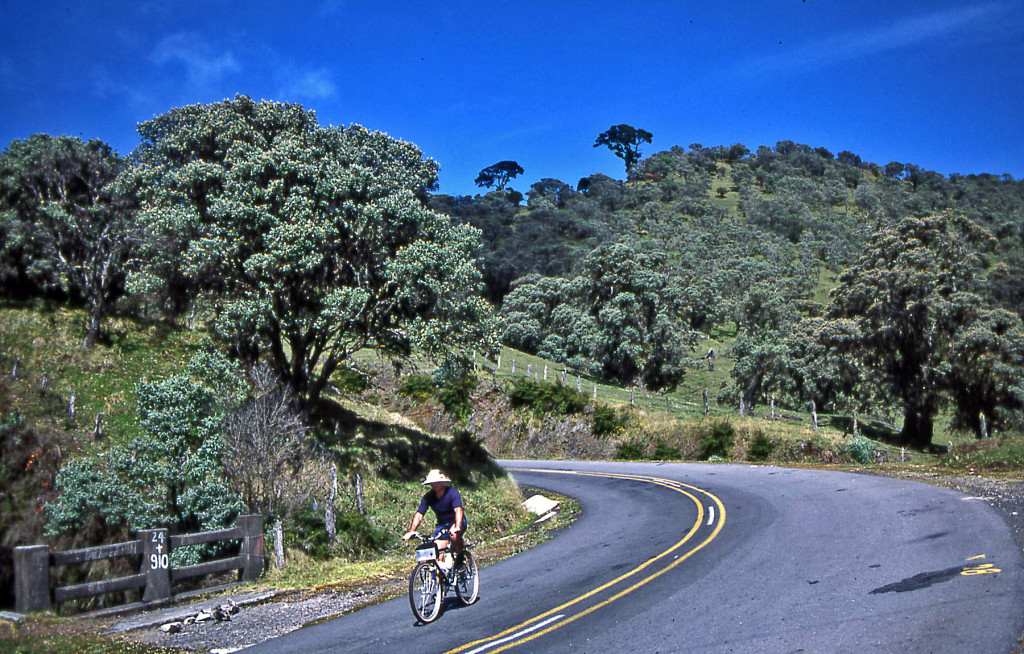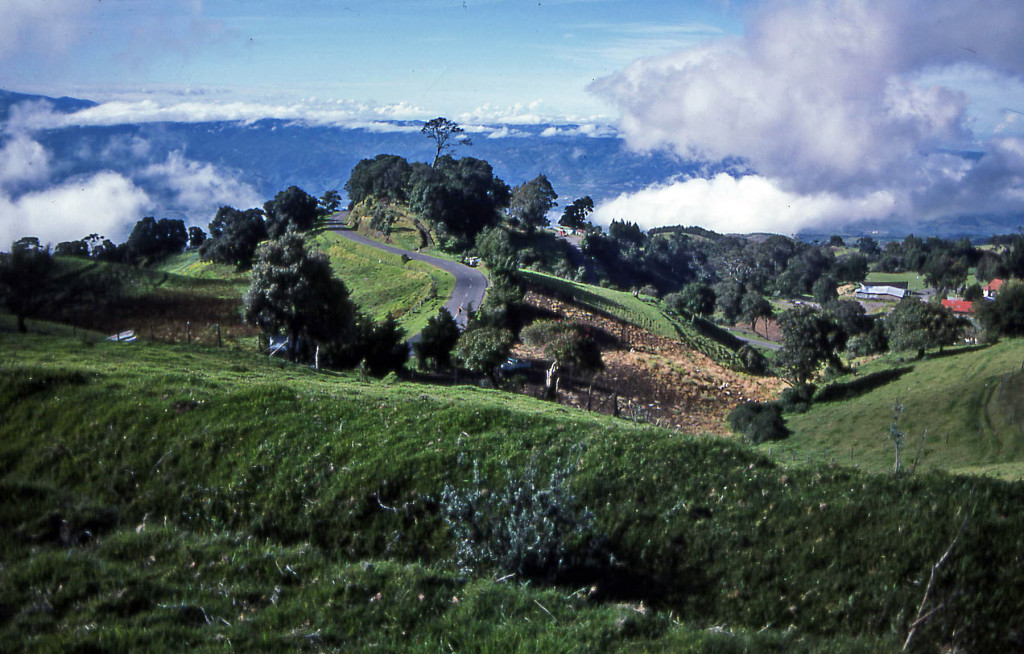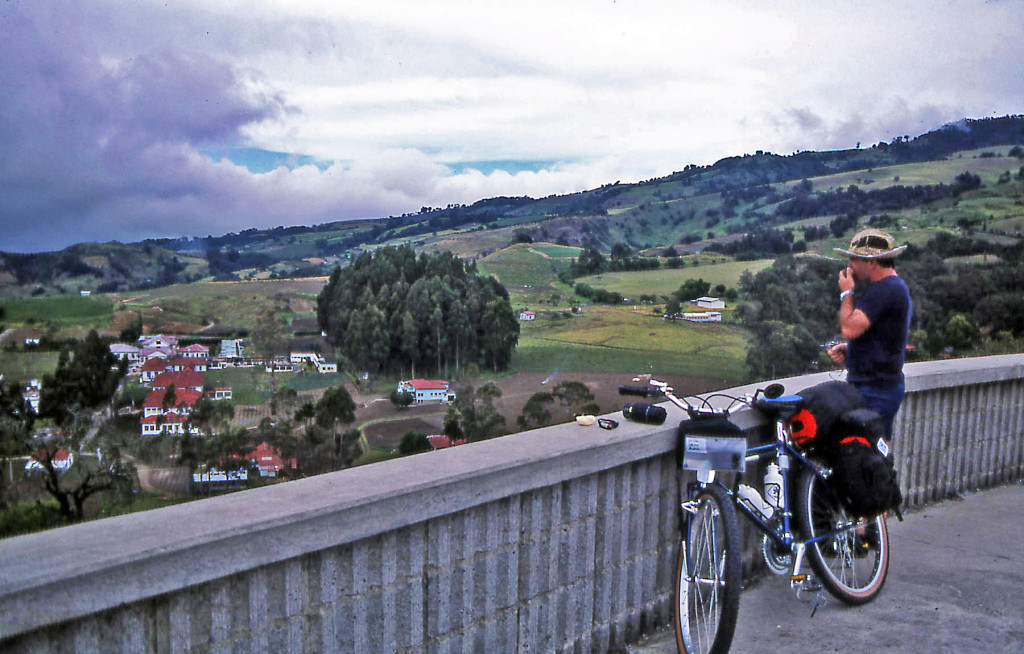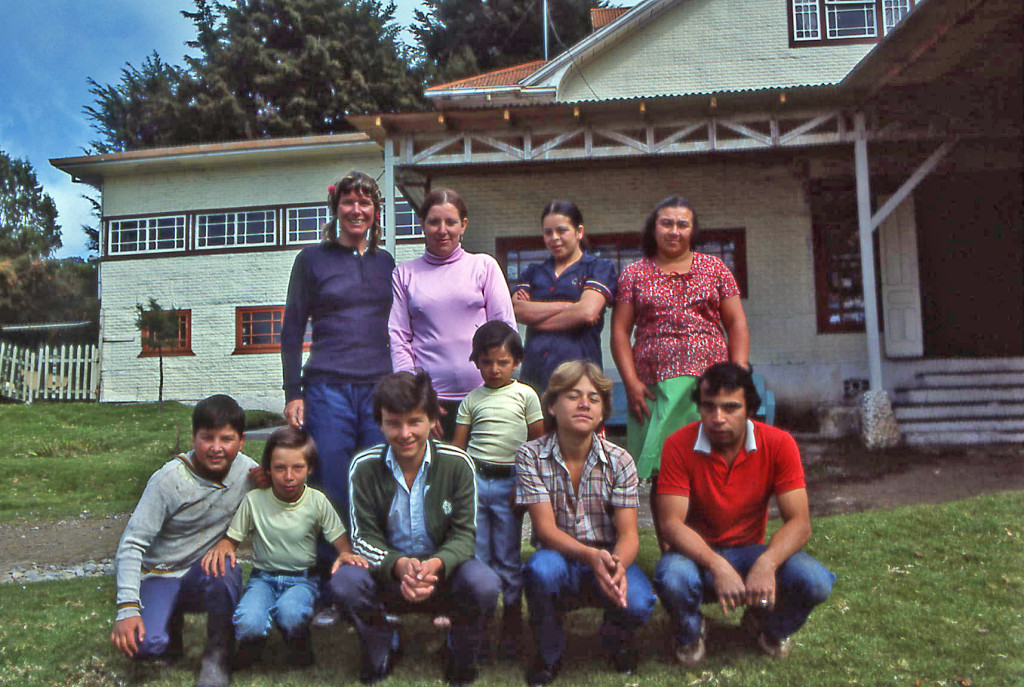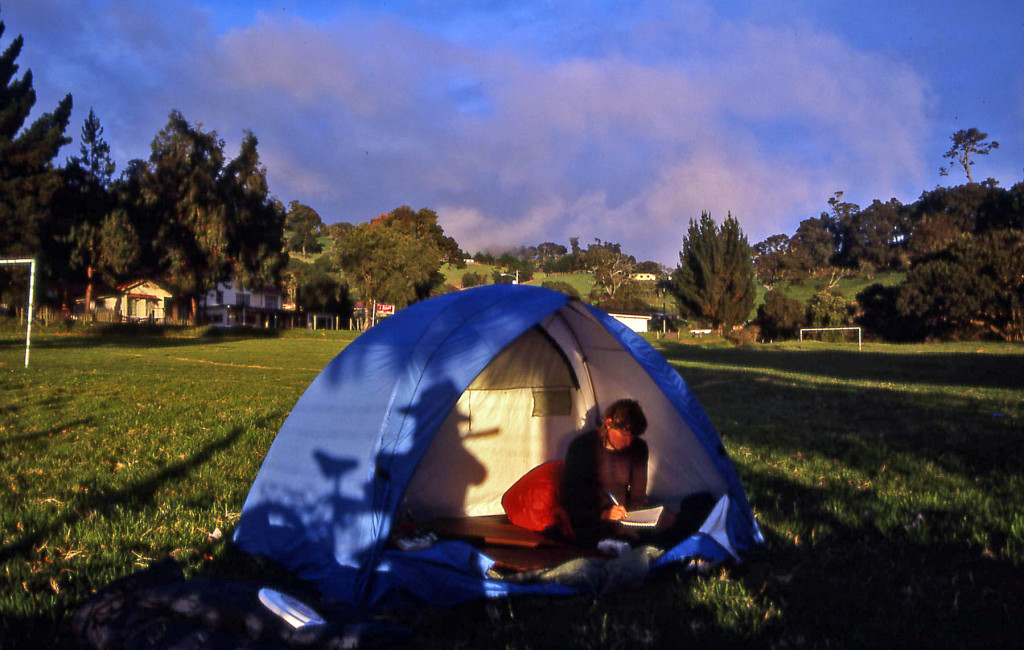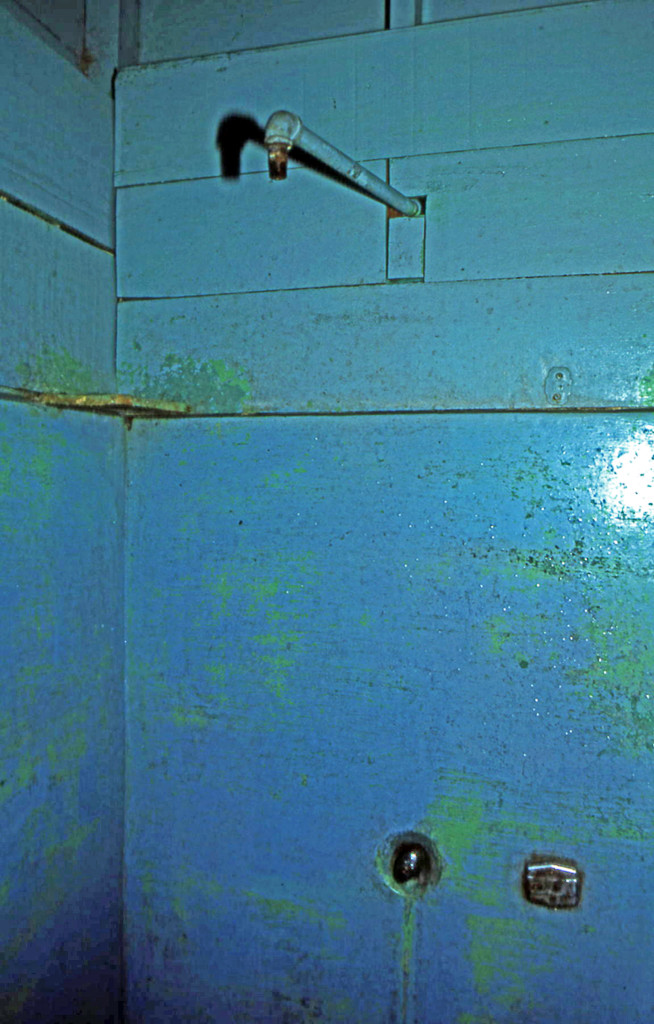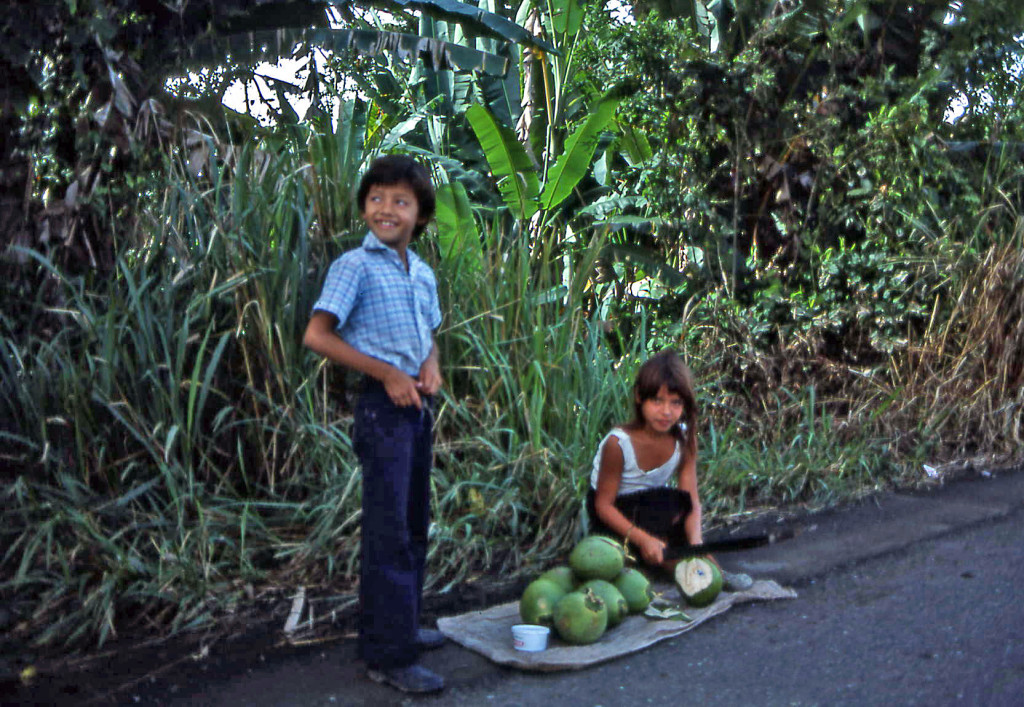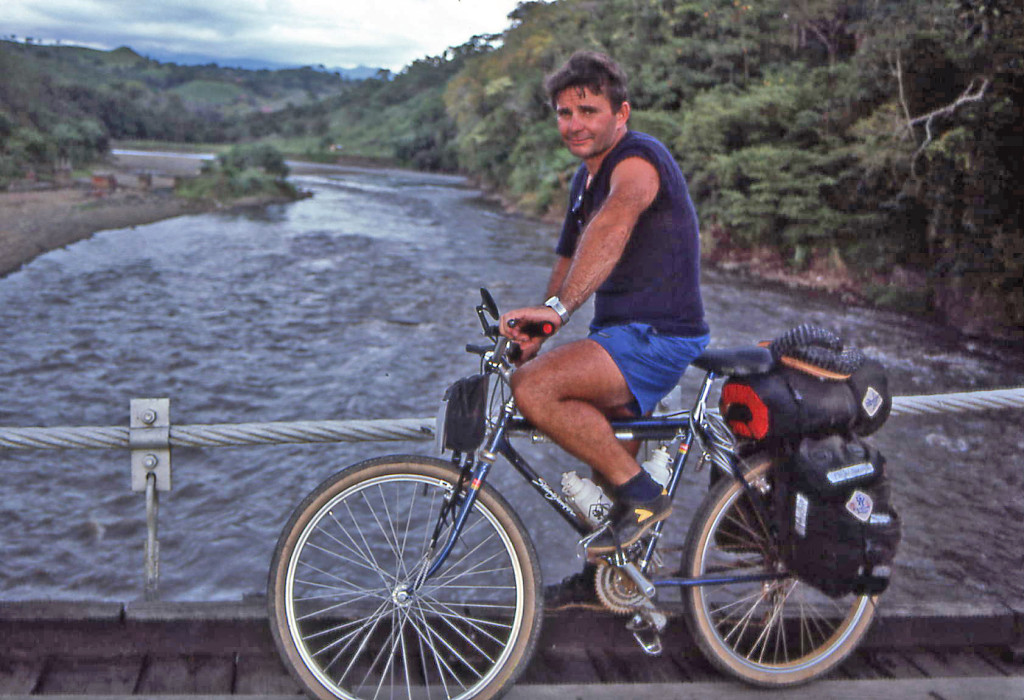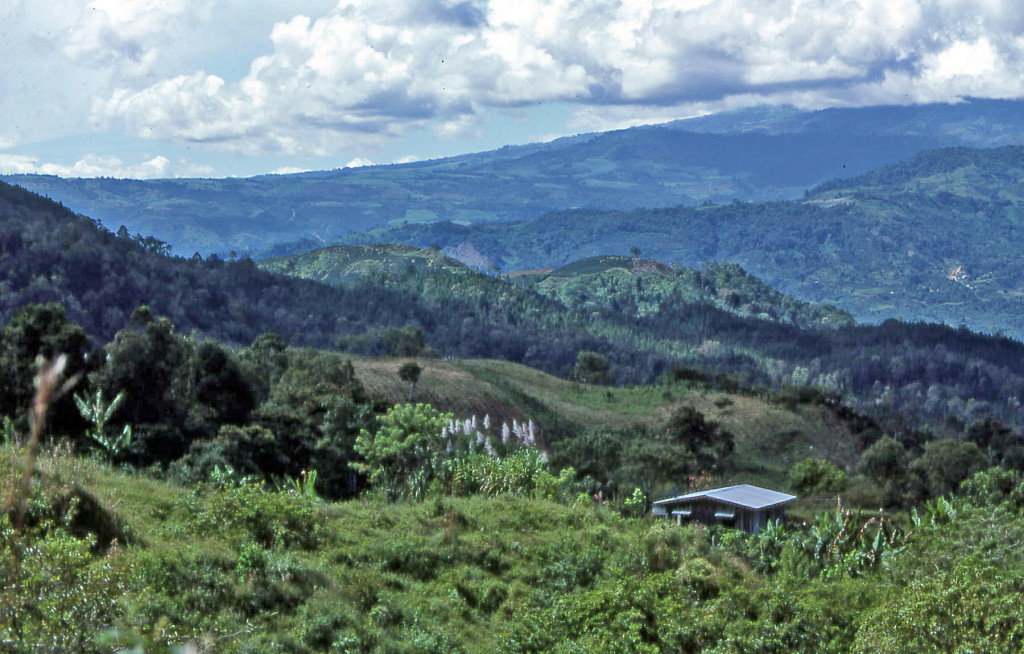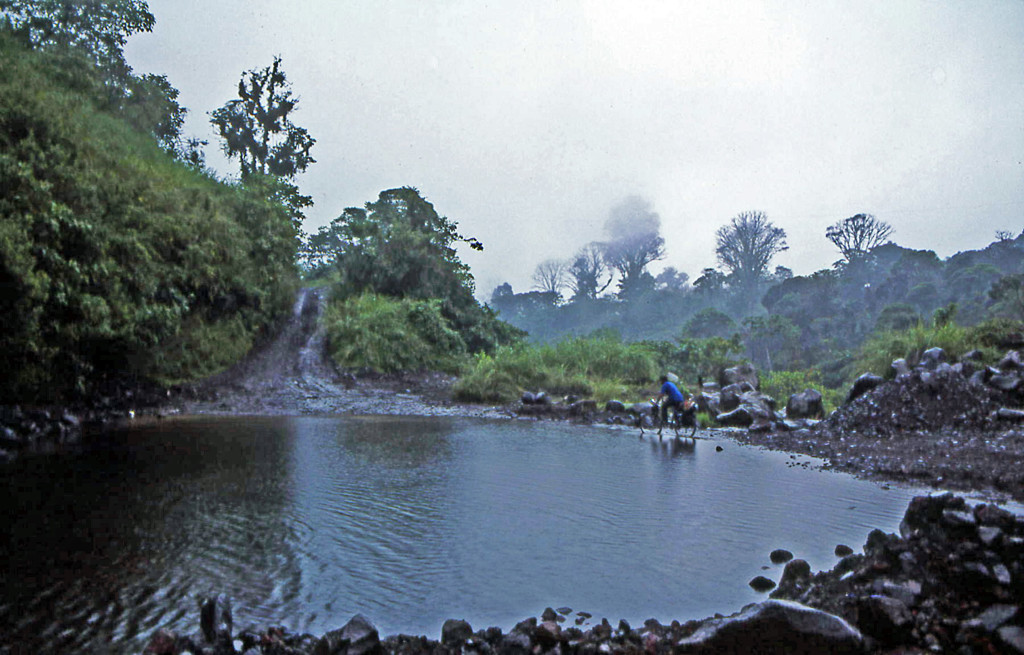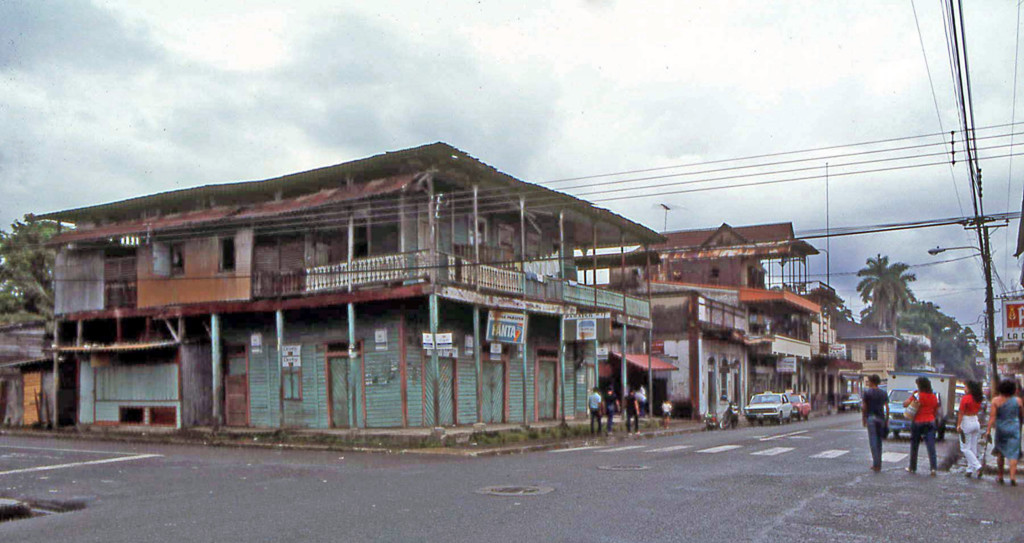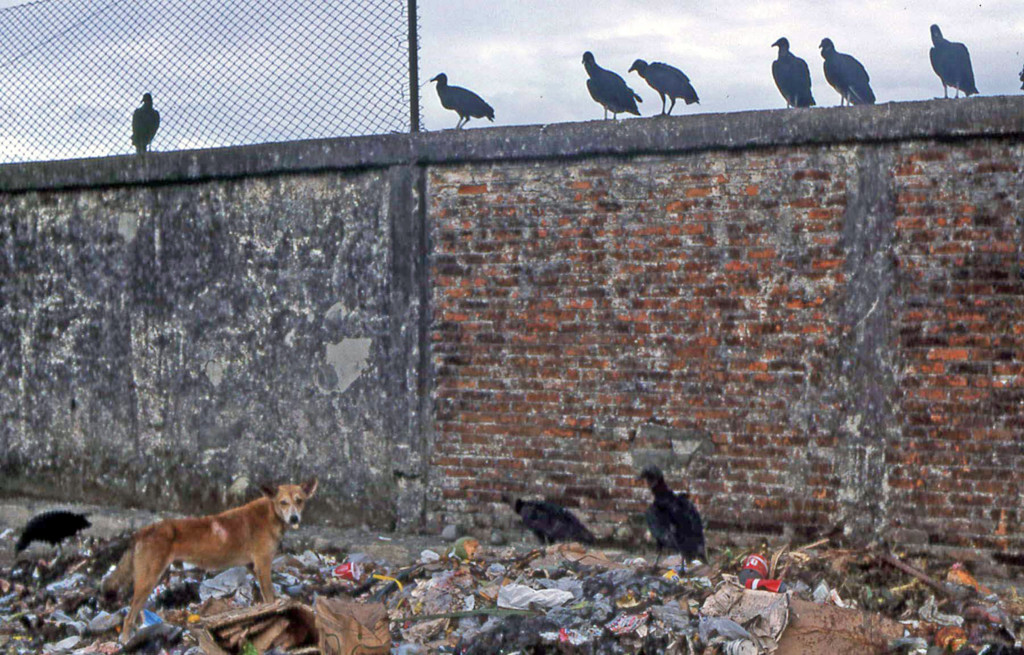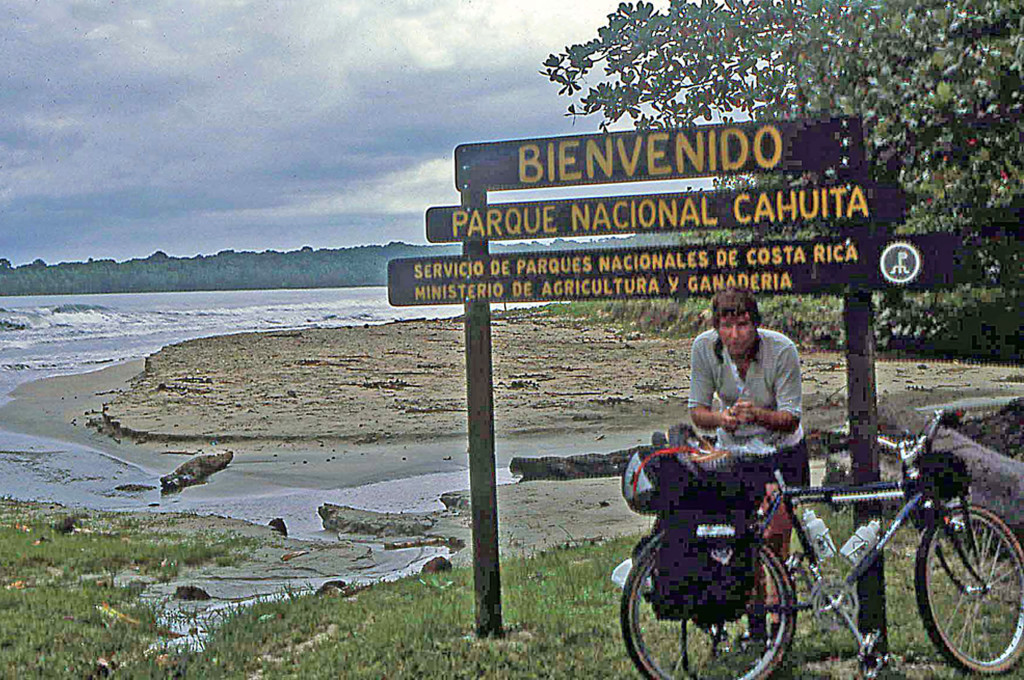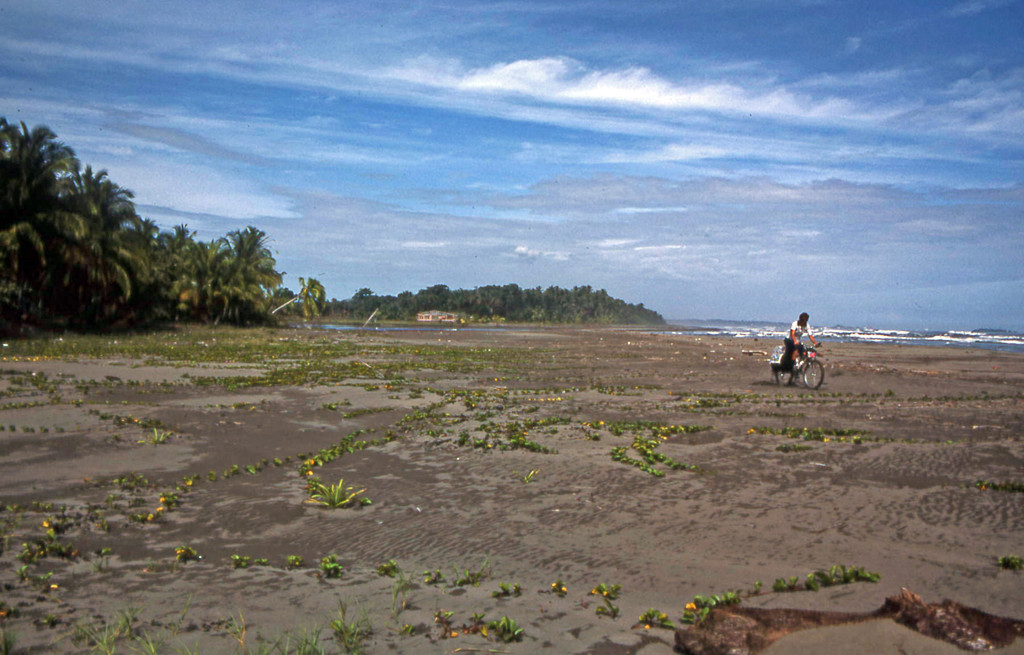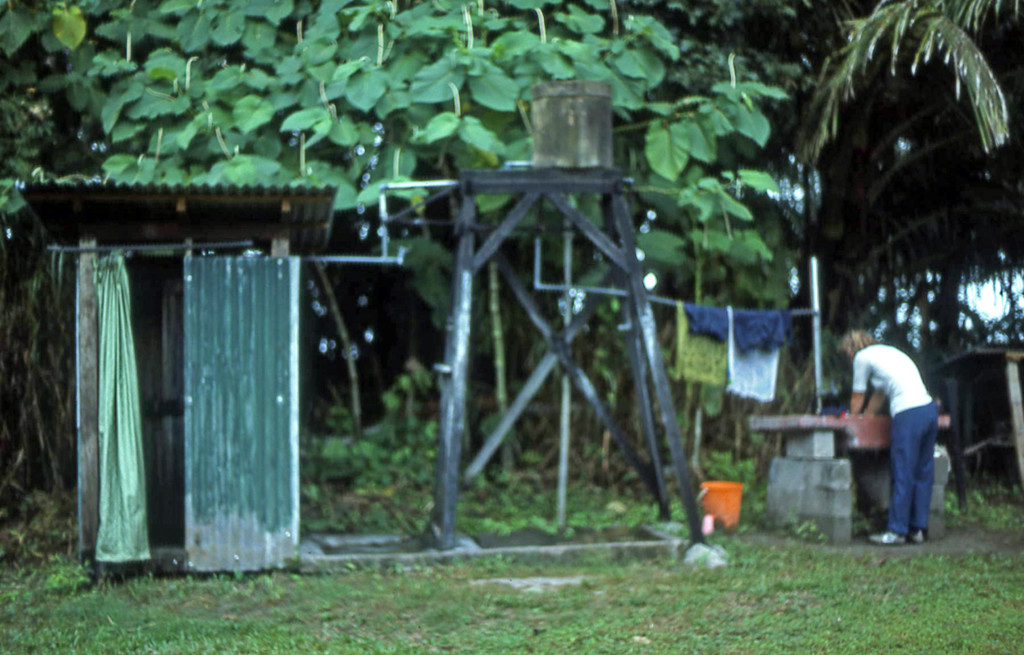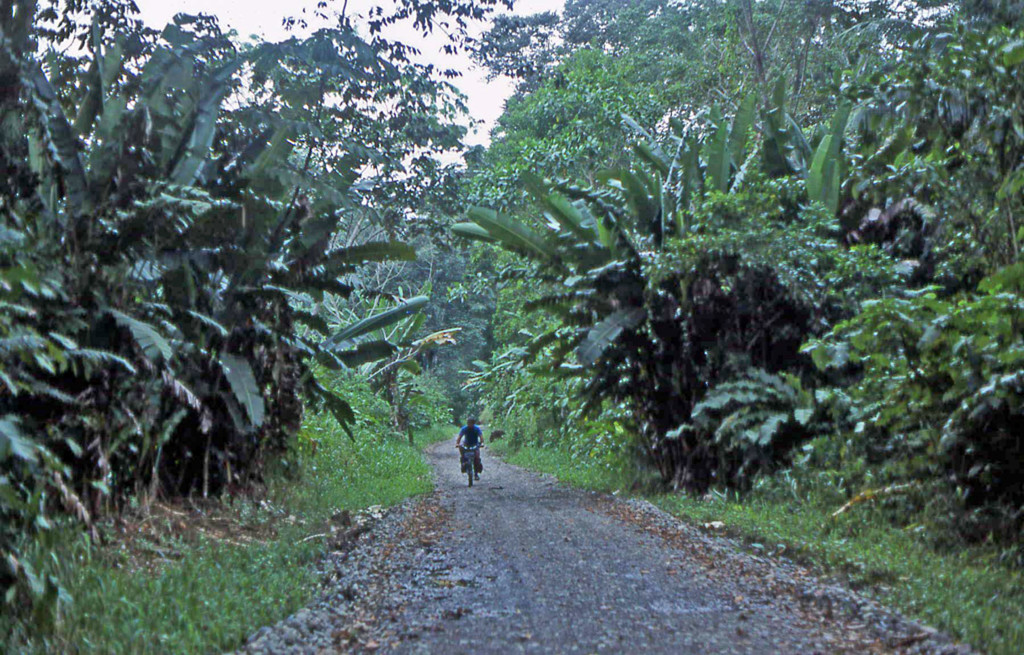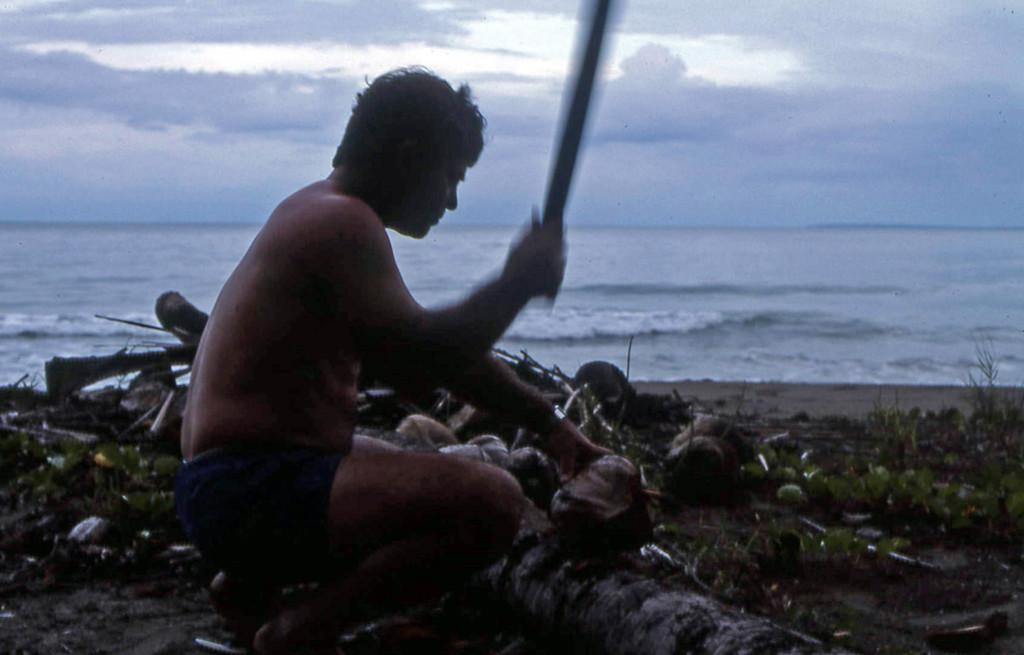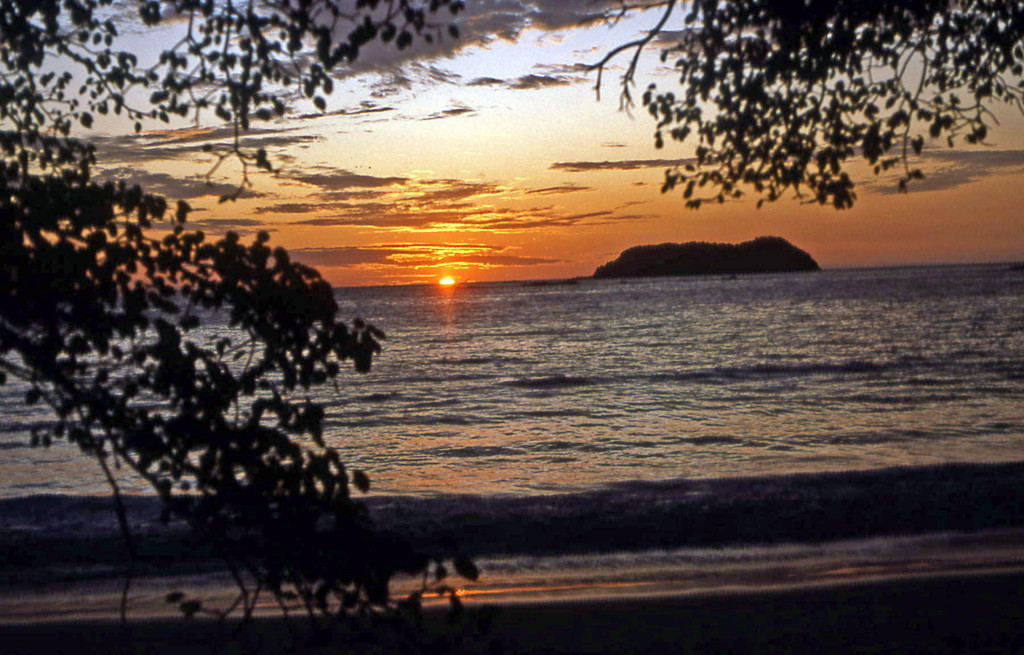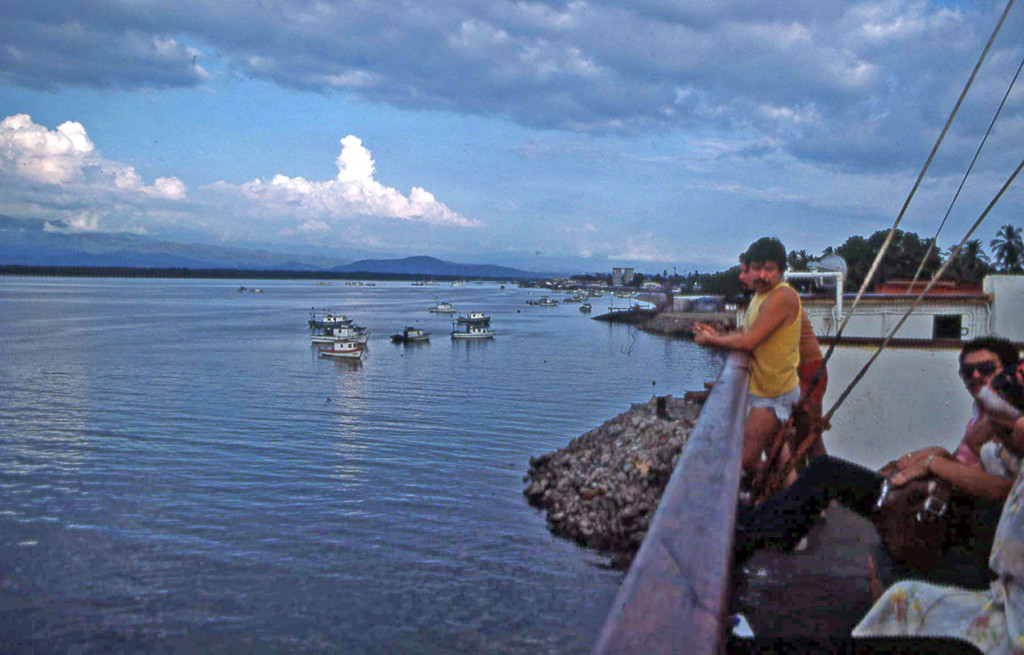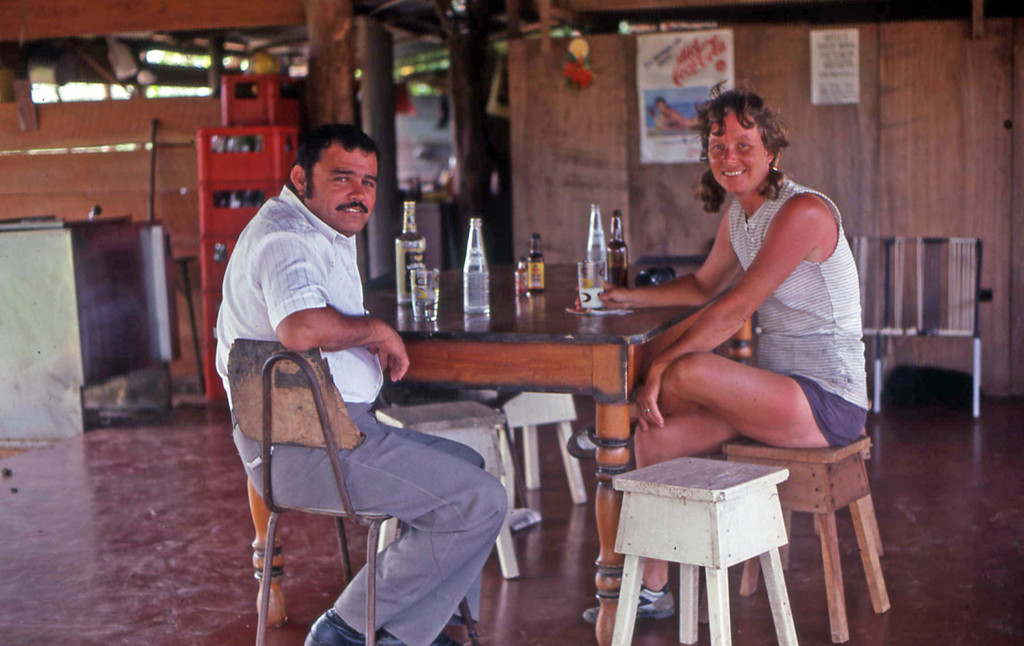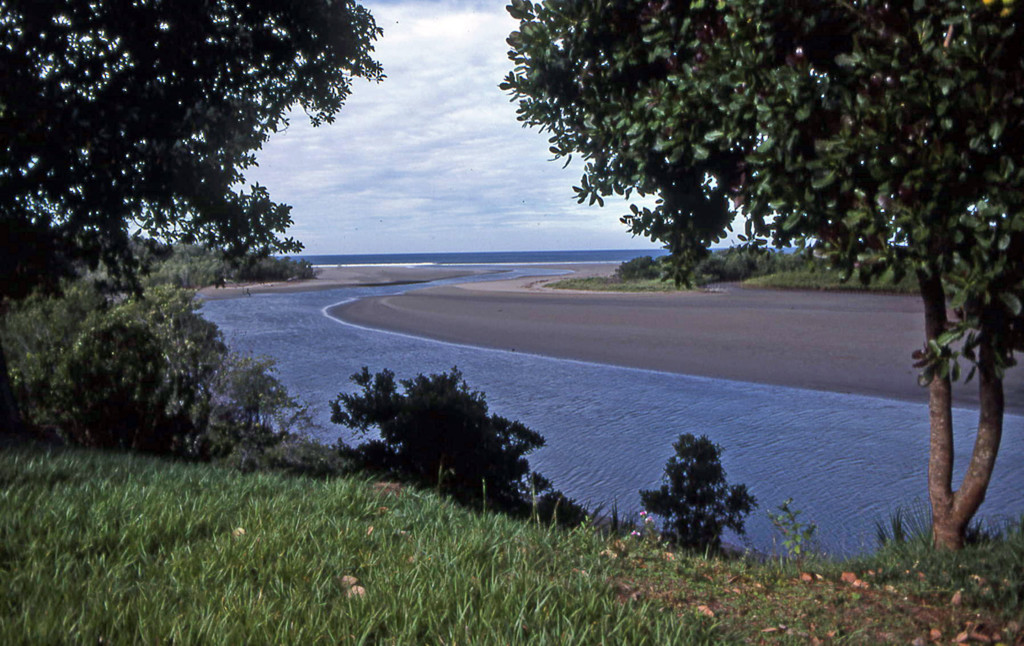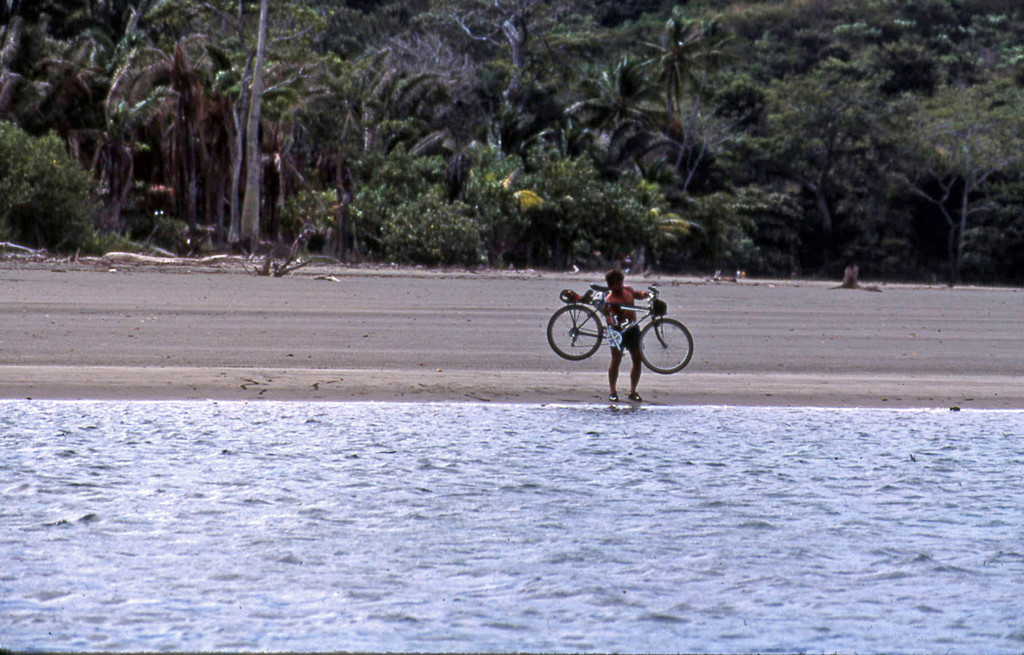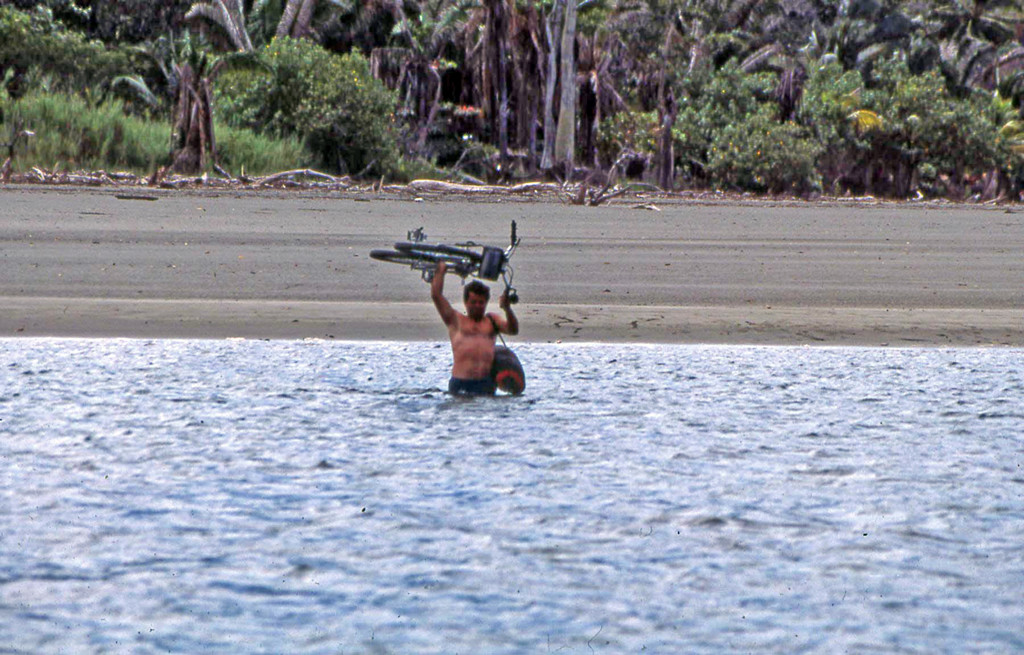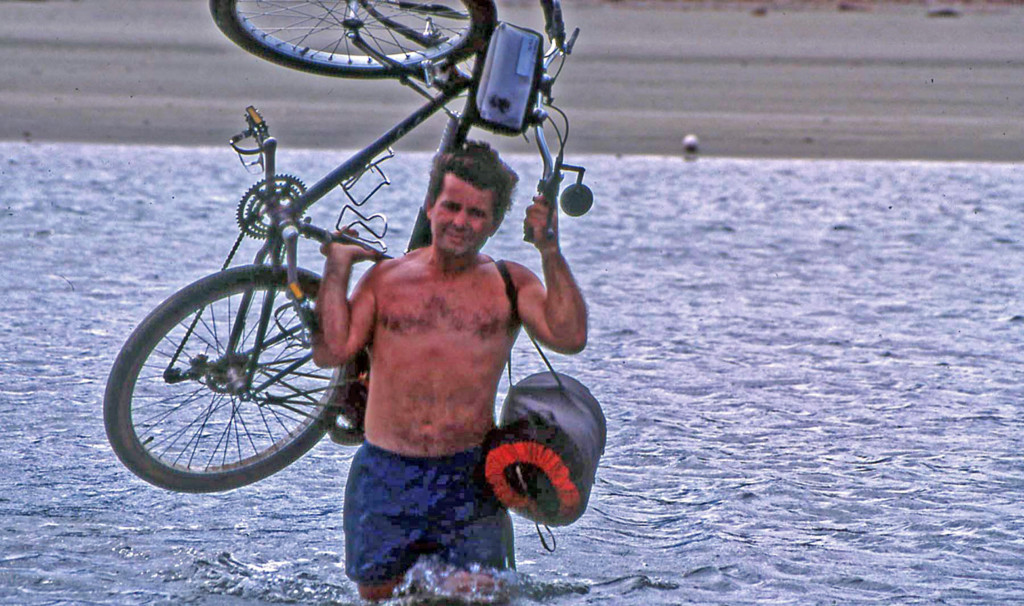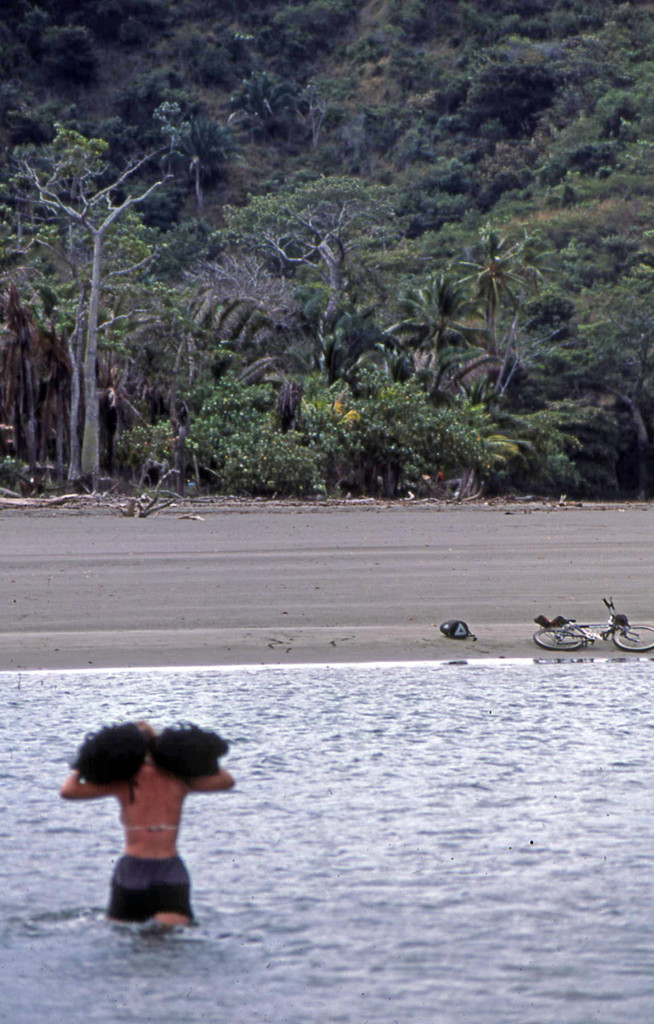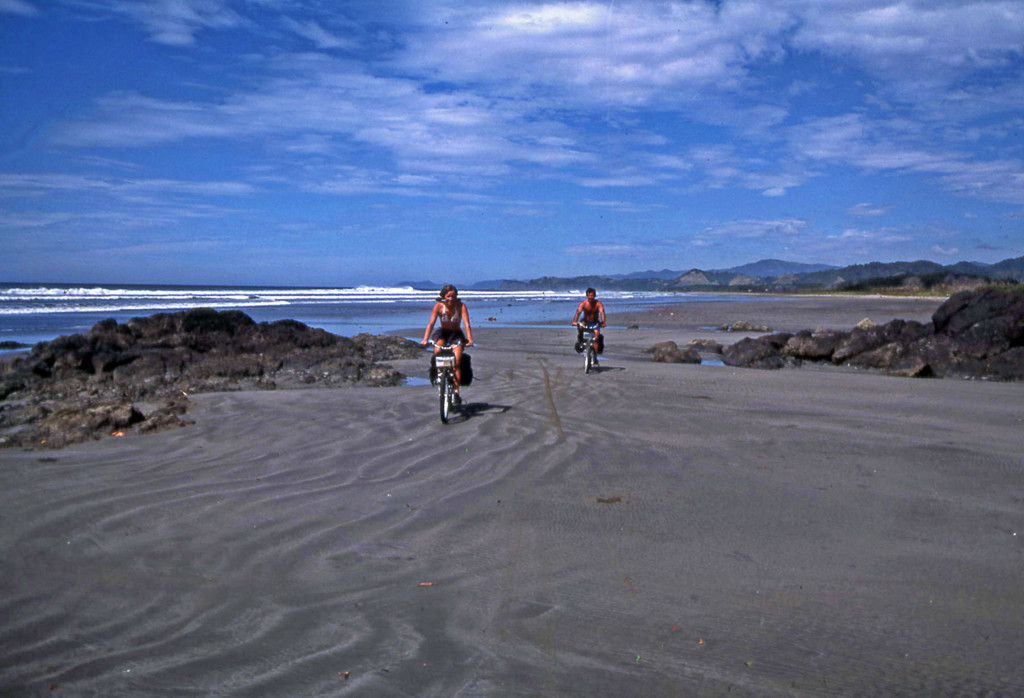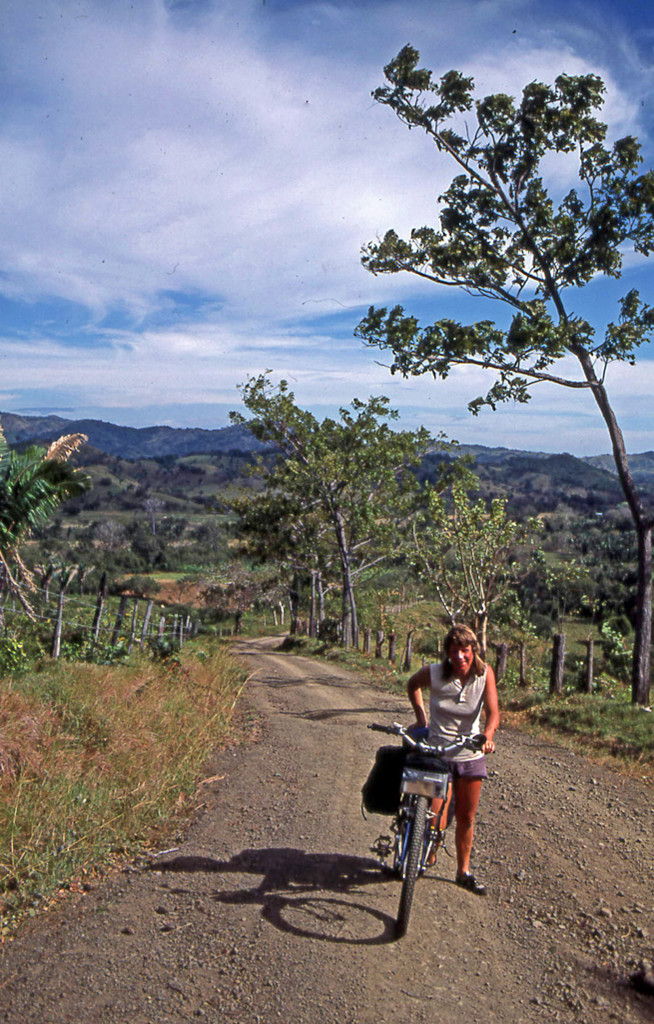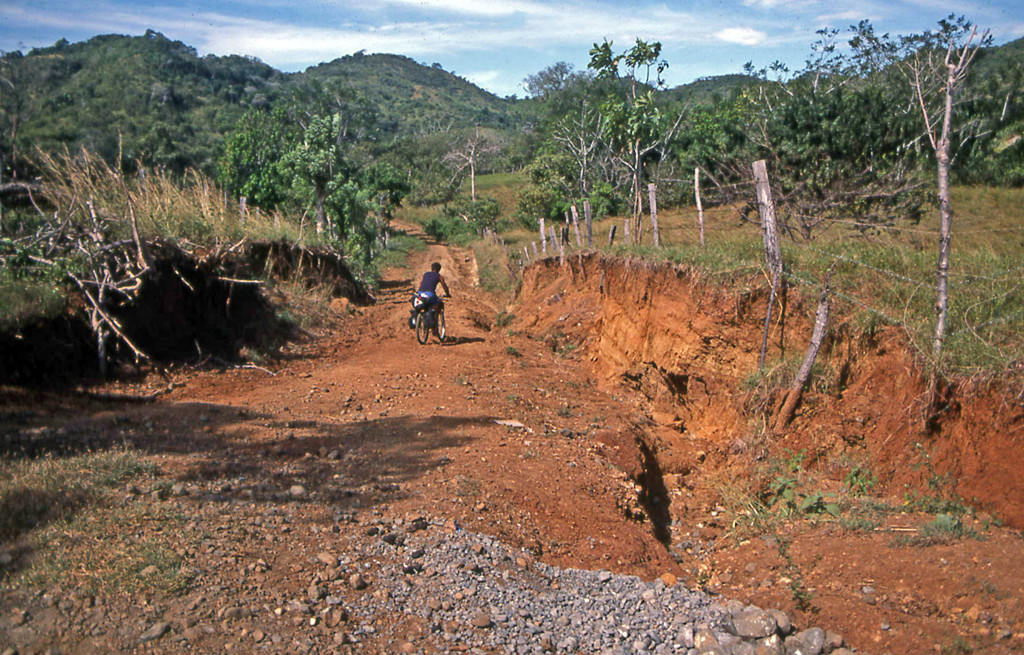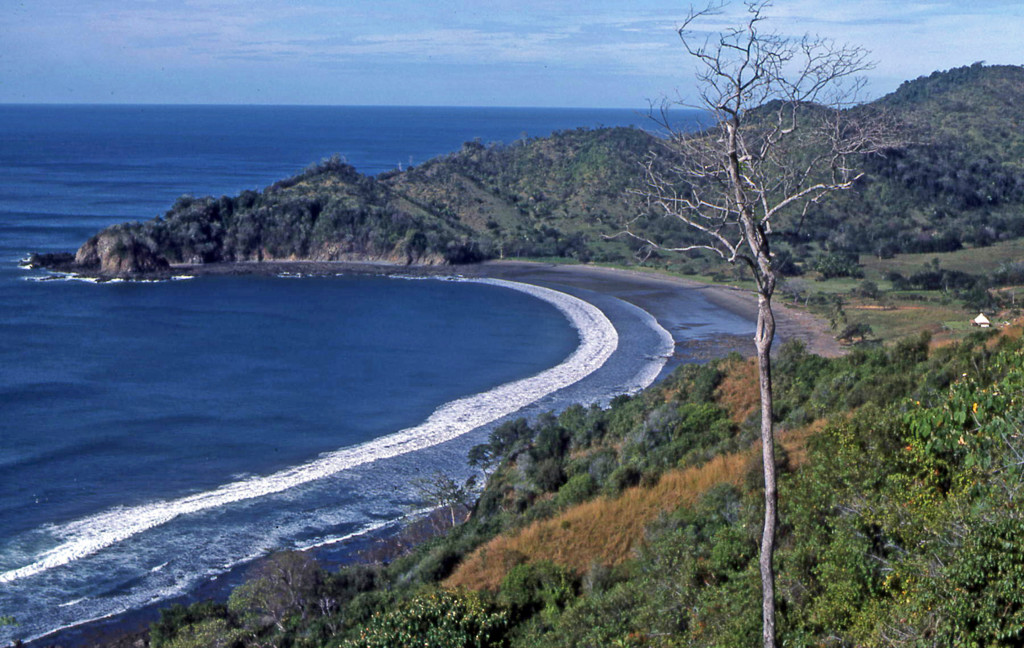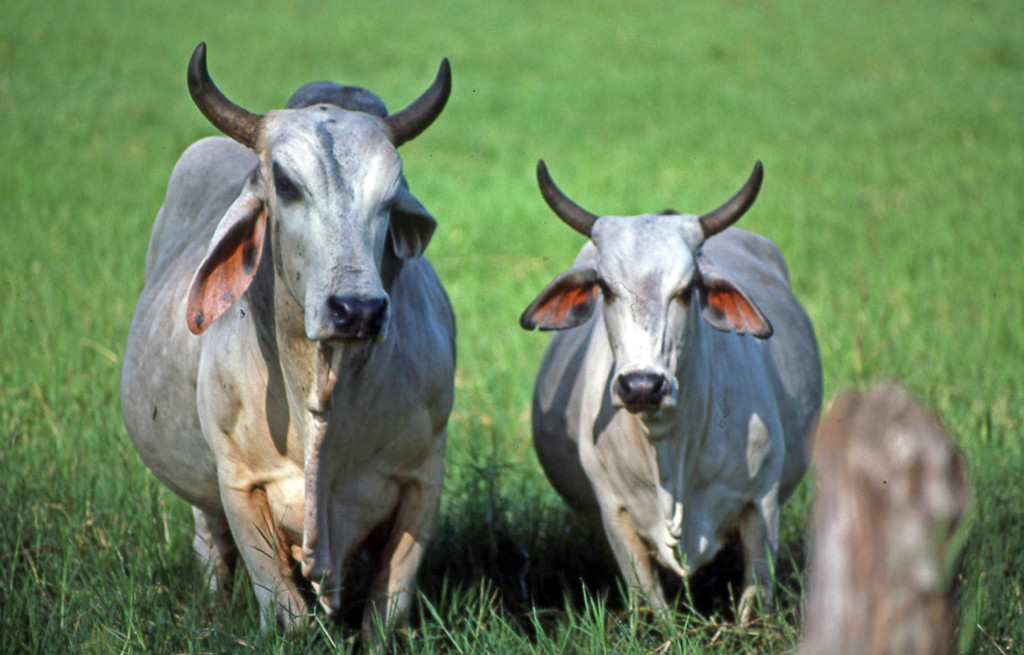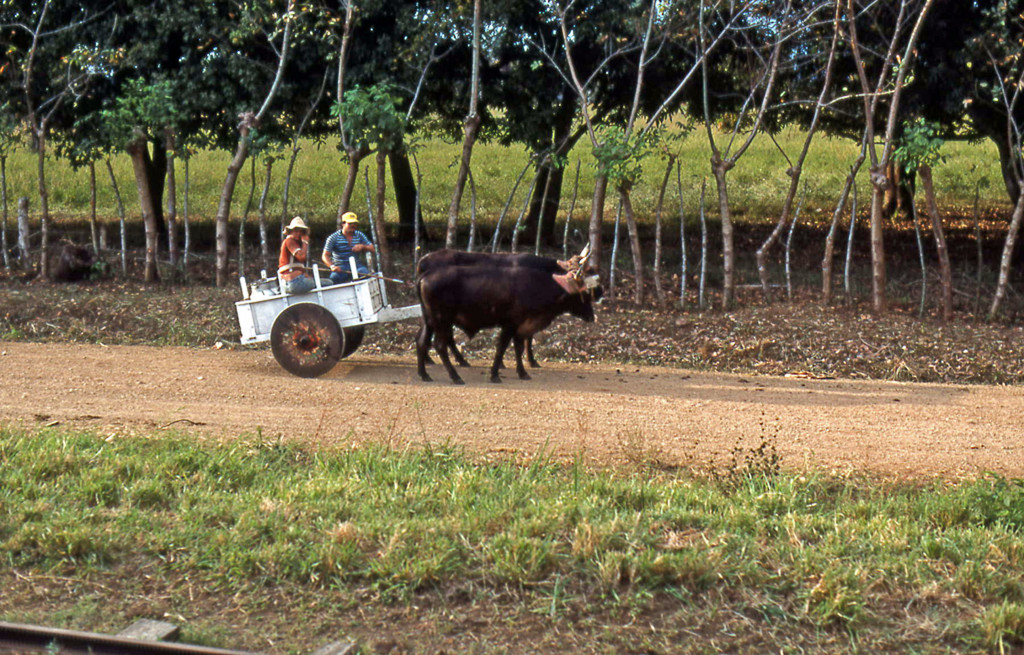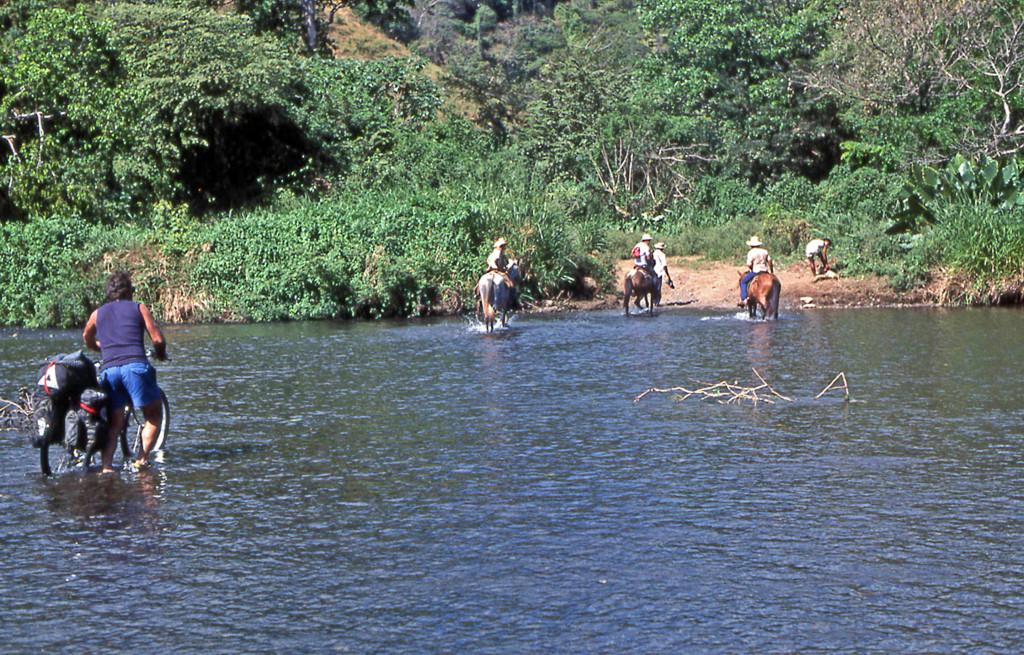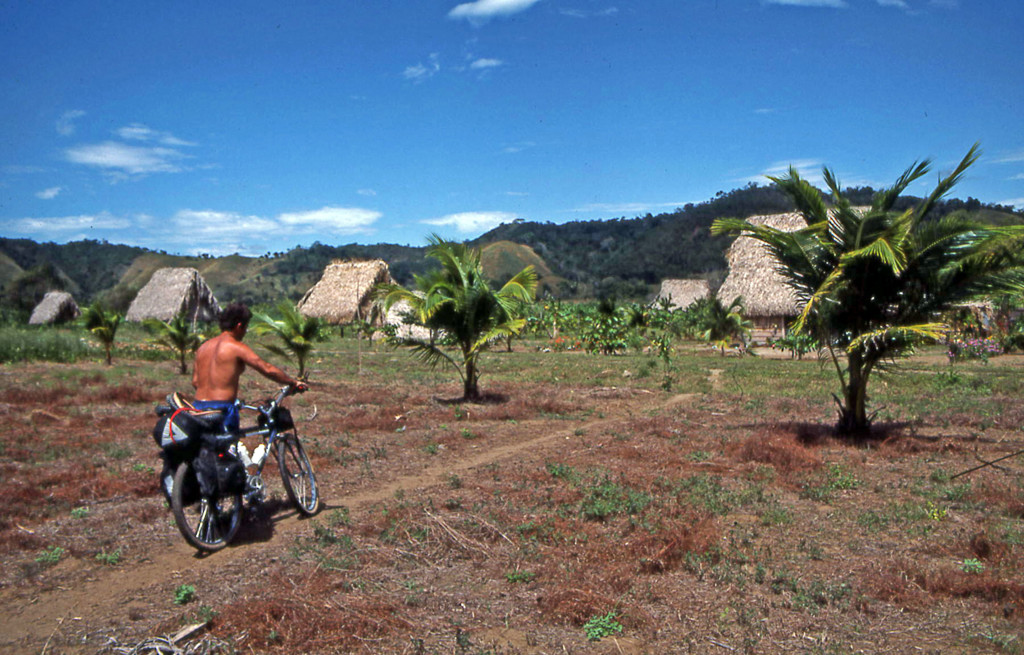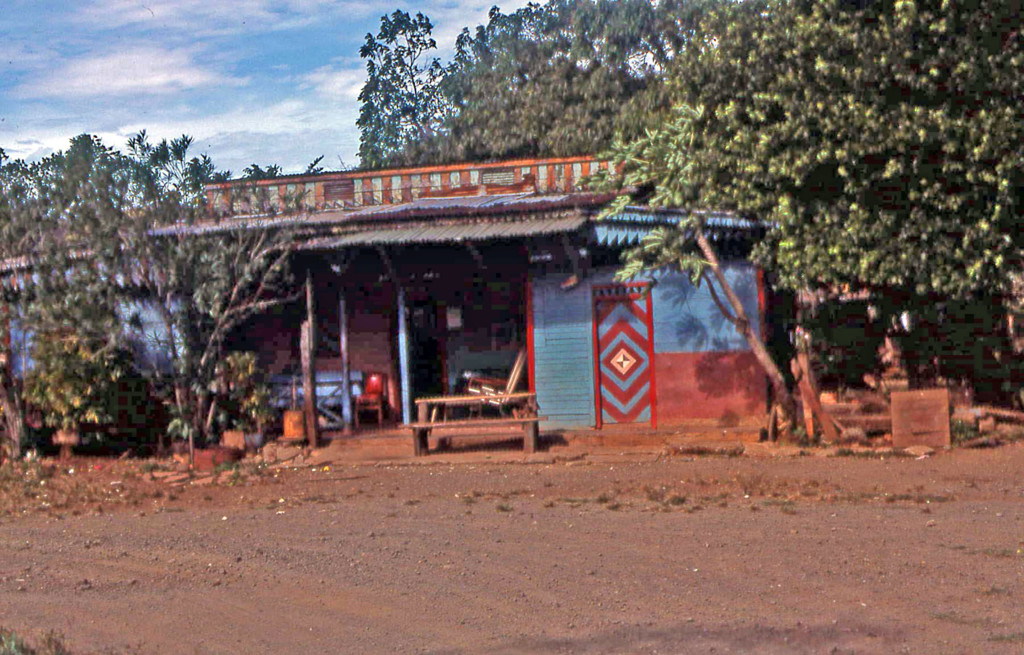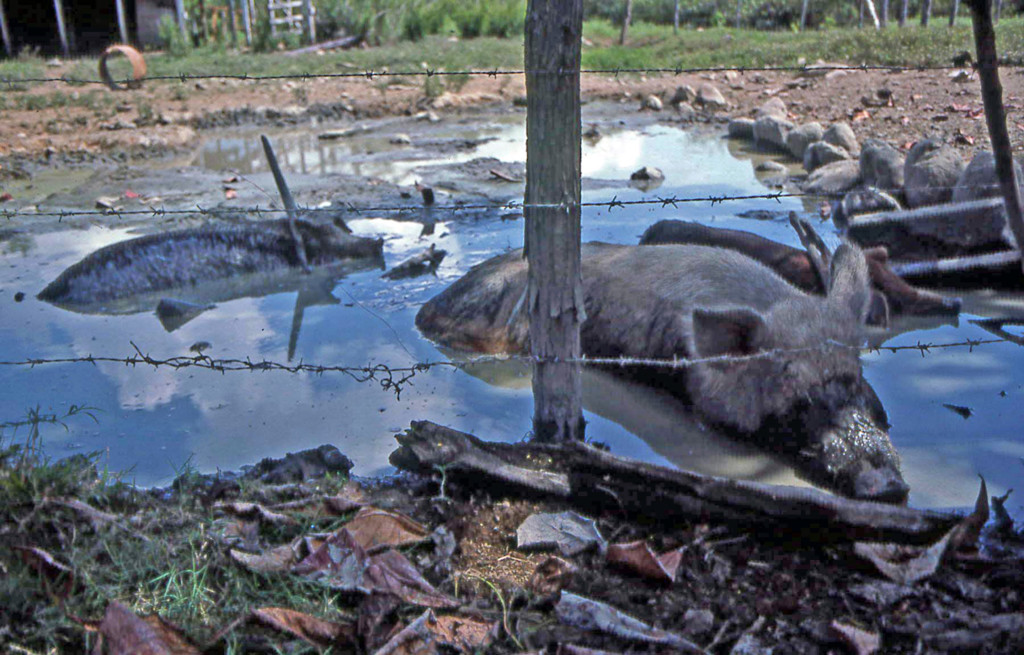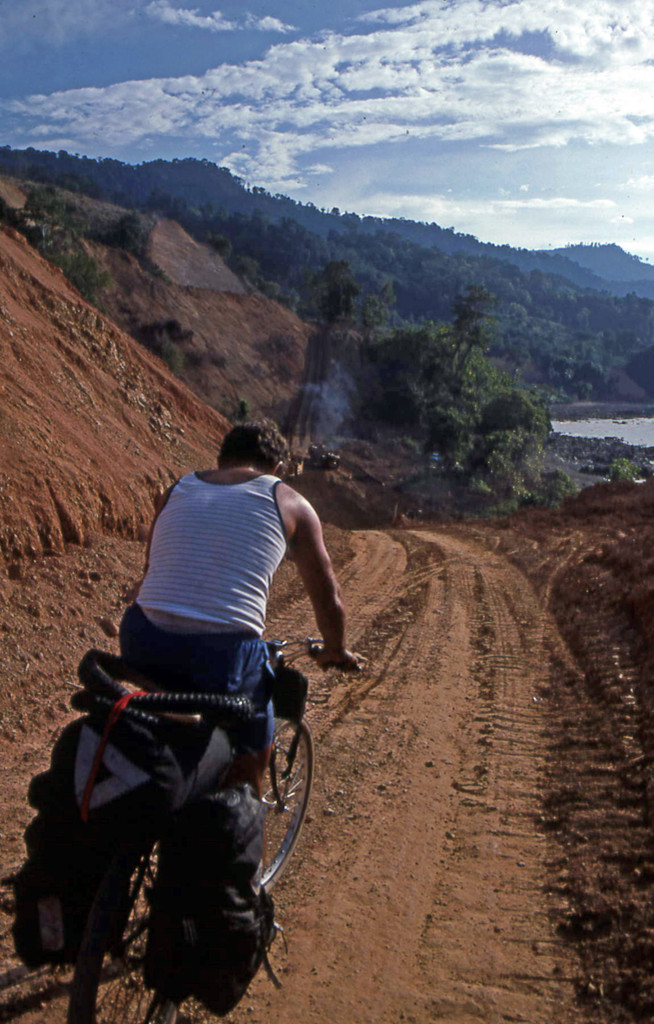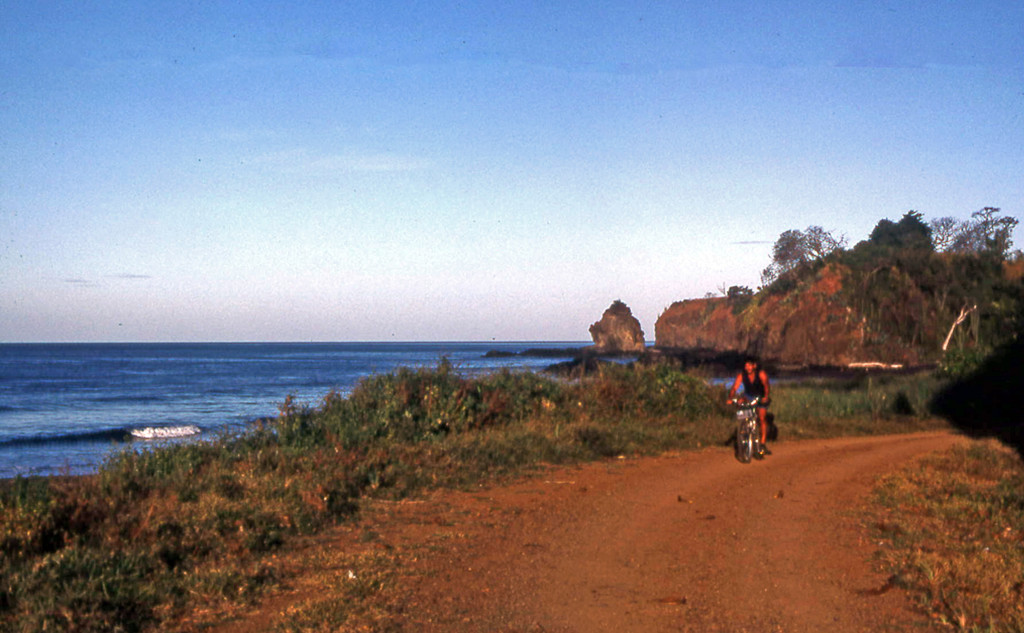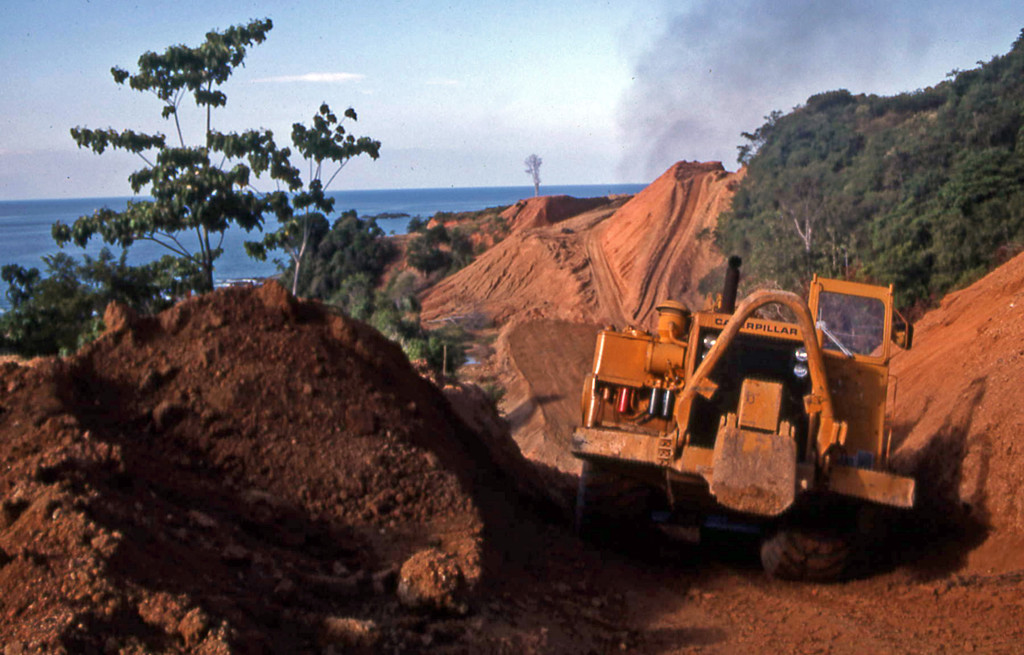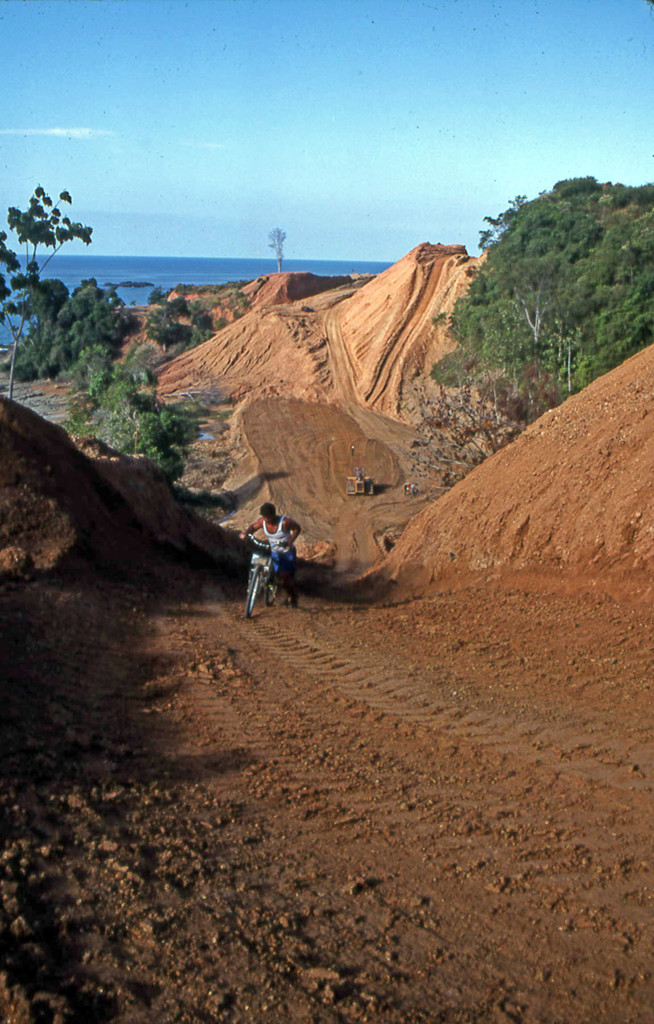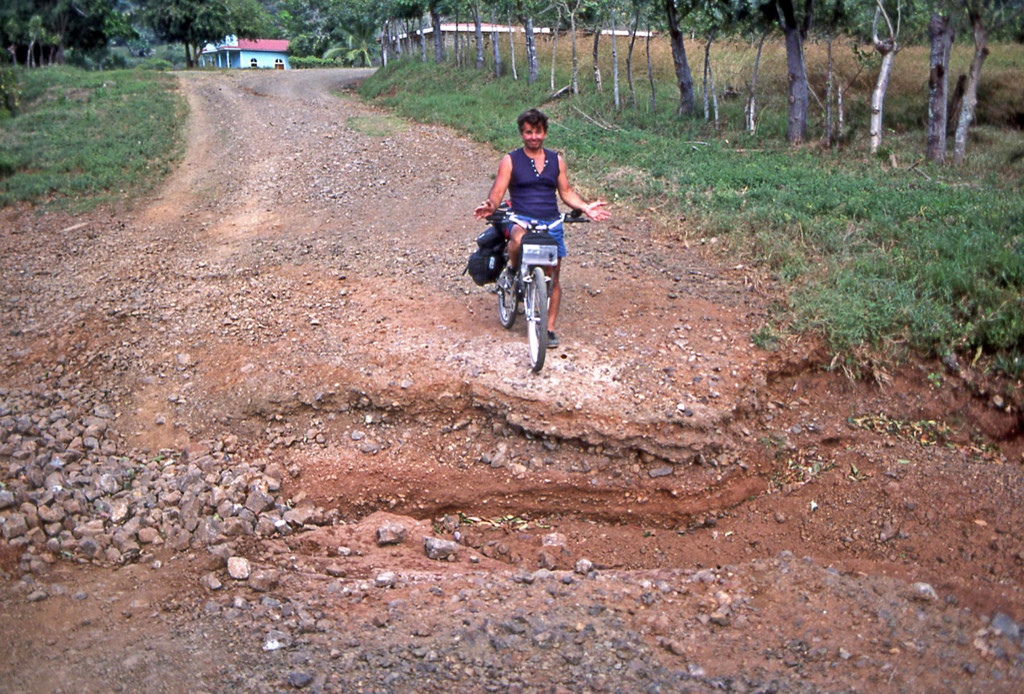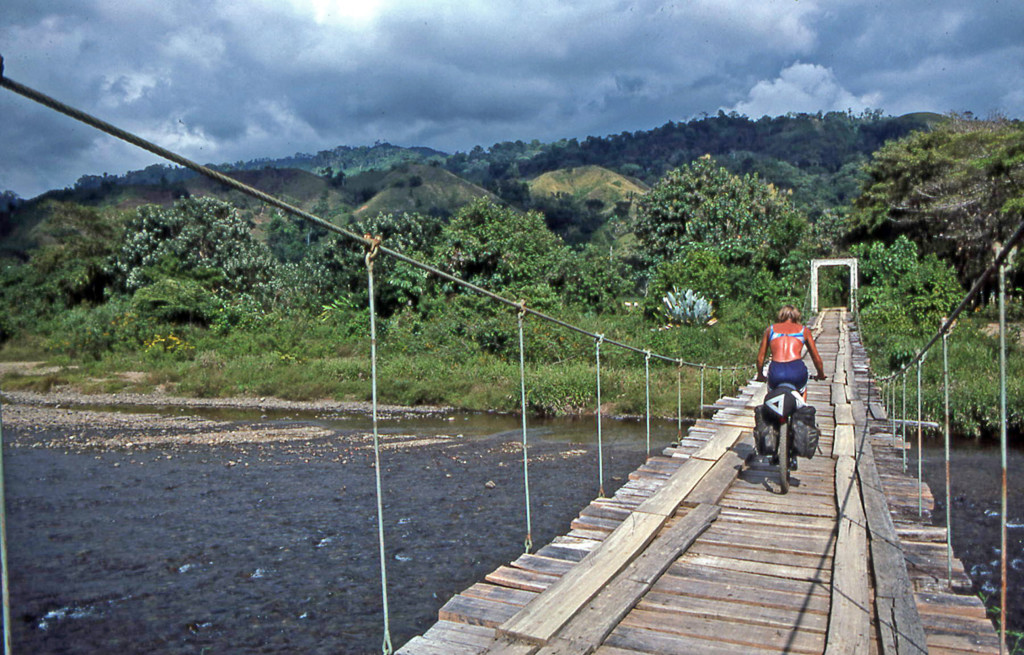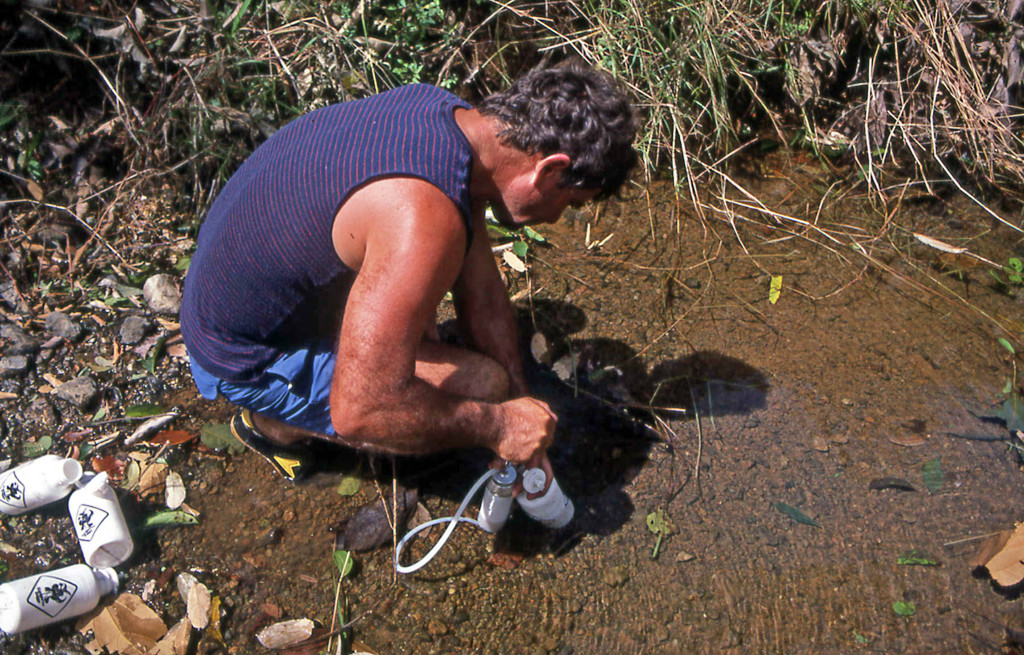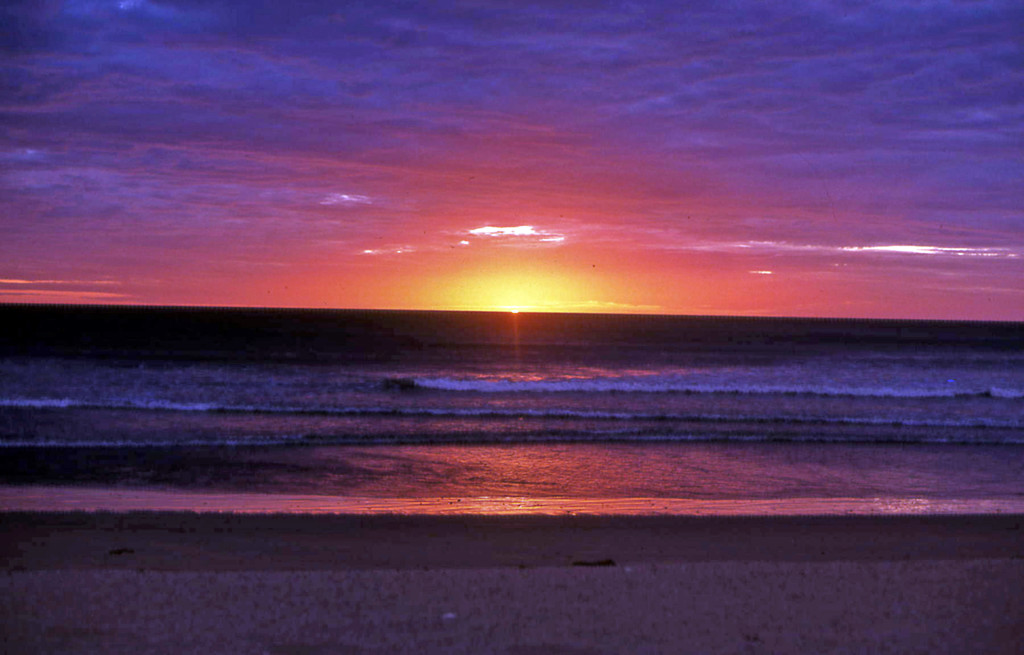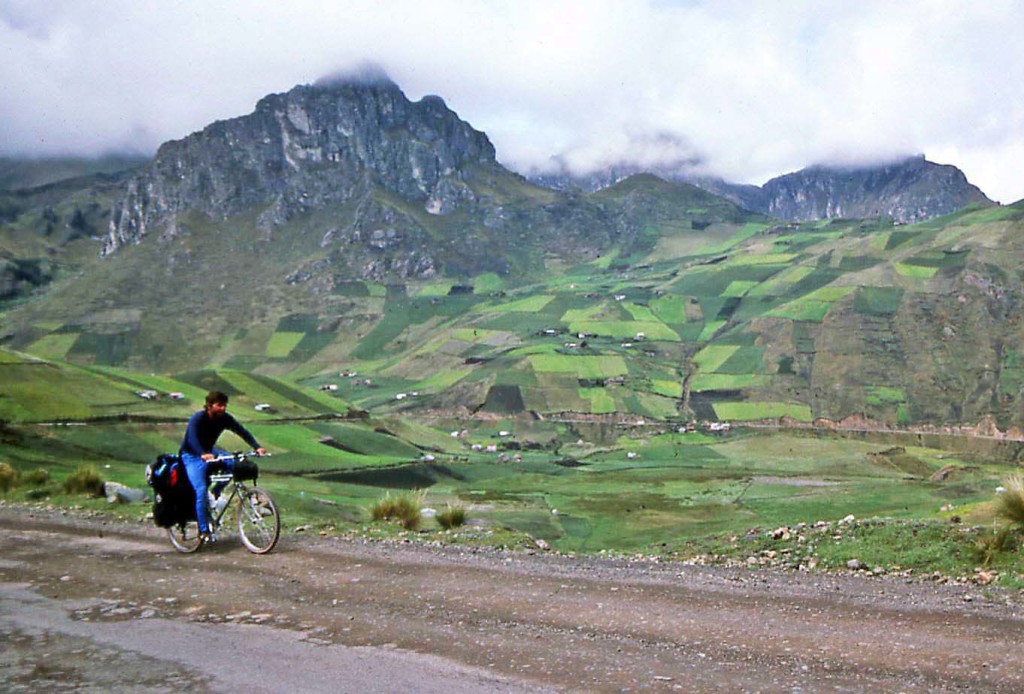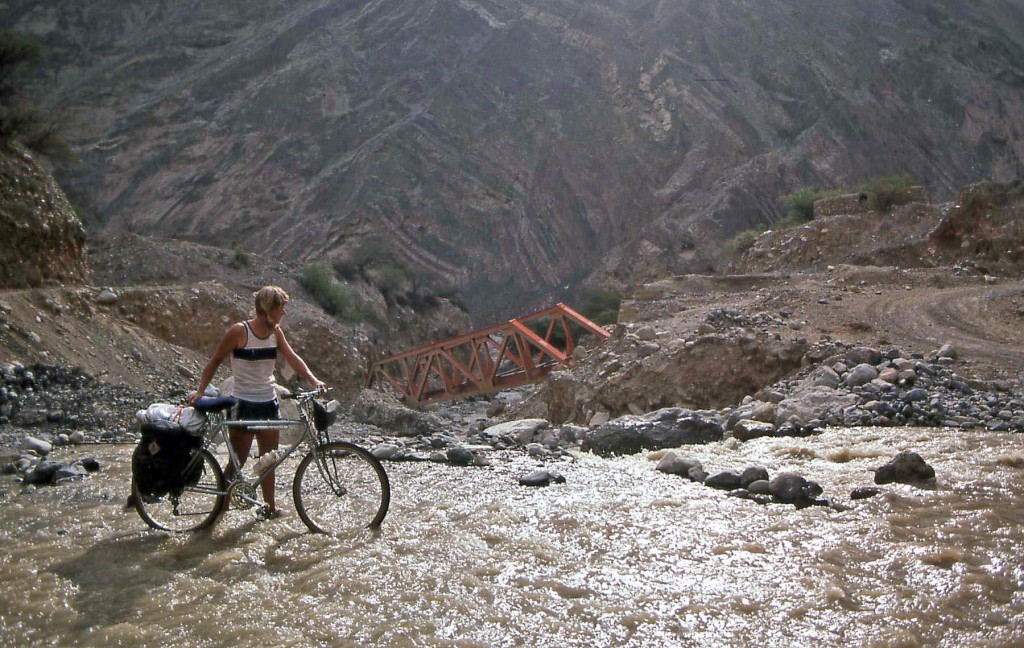We began this adventure bicycling Costa Rica, a friendly country not at war with anyone else during the 1980’s era of strife in Central America. We landed in San Jose December 10, 1983. Being our first bicycle tour ever, we had a lot of enthusiasm.
We created three bicycling routes:
To the Caribbean Coast
Around the Nicoya Peninsula
Along the Pacific Coast, to Panama
San Jose
The capital is a destination in itself for foreign travelers. It is a cheap city in which to live and extremely friendly.
Accommodations in San Jose, and indeed most of Costa Rica, were very basic unless you were willing to pay resort prices. Our hotel in San Jose was like a hostel, with kitchen and living area for all to share.
The “rooms” were not really rooms, as the walls only went 6 feet high and were cardboard thin.
Bicycling Costa Rica
Irazu Volcano National Park
We took a test ride to Irazu Volcano about 34 kilometers from San Jose. We wanted to check out our equipment and our bodies to see how each would do. As we would find typical in Costa Rica, and indeed throughout most of our trip, the hill climbing was daunting.
Without snow to govern steepness, most grades we climbed were 10% incline.
Note: In 1983 bicycle helmets were not yet an established necessity. Hence, we did not wear them on this entire journey. Since, however, we would never ride without them. Indeed, a helmet saved Ann’e life in Vietnam!
Teresa had never been anywhere else in Costa Rica. She arose every morning at 5 am to make her husband breakfast. He drove a tractor for the potato farm. She prepared his lunch of hot coffee, beans and tortillas; she then ground the corn and went to the hotel by 8 am.
There were no guests at the hotel.
Our second day, we made it to within six miles of the rim of the volcano. Since we had not seen any form of organized camping, we started the practice of asking landowners if we could camp on their land. We were never refused, and never charged anything. We carried small gifts for just such occasions in our bags: sewing needles, picture postcards of scenes in America, earrings and such.
On this day, we found a hotel and restaurant on the edge of a soccer field.
Irazu volcano was a grueling six miles uphill the next morning. It is a living volcano that last erupted in 1994. There was no smoke or activity when we rode there.
When we returned to the hotel, Teresa was kind enough to offer us a shower in the hotel.
The water was ice cold, straight from the mountain stream. There was no heating facility.
The crude plumbing protruded through holes in the wall and floor.
There were no shower heads of any kind. There was no water pressure.
This seemed to be the norm everywhere we traveled at the budget level at least.
We never went inside any fine hotels.
Bicycling Costa Rica
Limon and the Caribbean Coast
With four days under our belt, it was time to begin our journey for real. We headed for Limon and the Caribbean coast, a one way journey by bike with plans to return to San Jose by the train.
We must have dropped 3000 feet in elevation from the volcano towards the coast.
The hilly country in between was photographically and agriculturally rich.
Limon
Limon looked like it was built in the 1880’s and never saw a lick of maintenance. Garbage was thrown about freely, steel grates from the sewers had gone missing, buildings didn’t look safe enough to even enter.
As we bicycled into town, young men gathered in the streets. Some were tempted to block our way.
Plans were to bicycle along the coast to Cahuita Park. As it rained hard almost every day, the gravel road was a sea of mud. The Caribbean heat was oppressive, muggy and buggy.
We stopped at every stream to jump in and cool off.
We hoped to find a town at Cahuita Park entrance to buy food supplies. Indeed, there was a town, if it could be given such a label. Just a collection of old buildings, one hotel, one store and one restaurant. It looked like it came from a John Wayne movie set.
Busloads of gringos would arrive. Clutching their suitcases as they de-boarded, their eyes popped wide open in surprise and trepidation at the sight. Cahuita was touted as a tourist destination; a fine place to spend a week. We doubt those folks thought the same.
Supplies were limited; no fresh fruit or vegetables as one would expect; canned tuna and canned frijoles would be our diet for the next week. The jam was pure sugar and the bread was something Wonder Bread would be proud to brag about.
Cahuita National Park
The entrance was six kilometers away. We cycled four days in and back on a narrow road that followed along the ocean and through the jungle.
Camping on the beaches was a plus; picnic tables and cold showers were nearby.
Our initiation was complete. After two weeks of cycling, we returned to San Jose by train just in time for Christmas week celebrations. After the holiday, we would embark on the real journey.
While in San Jose, we tried to buy road maps for Costa Rica. Neither the tourist bureau nor the transportation office had any.
It was a constant problem we encountered as we traveled all the way down to Peru. Maps, language books and guide books in general were unheard of in the countries.
Bicycling Costa Rica
The Nicoya Peninsula
We crossed on the ferry to the Nicoya Peninsula where we cycled north on the beaches, making a big loop back to Puntarenas.
We spent two weeks making this loop. We cycled on beaches and cattle trails; forded rivers; we pushed our bikes sometimes as much as we rode them. Some days we only went 6 miles total. Temperatures in the high 80’s drained our energy. Food stores were far apart with very little choice. We ate coconuts, tuna fish and dried crackers. We always met kids everywhere; often they had fruit to sell. We lost a lot of weight.
We camped on the beaches, in the jungle, in cattle fields.
“There are no roads from here to Jicarral.” The voice belonged to a huge man dwarfing the stool on which he perched, his hands wrapped securely around a half-empty vodka bottle. Uncertain of his sobriety, I shuffled through our panniers and pulled out our well-worn map.
The usual tourist handout, It was like using an interstate map to locate trails in a National Park.
“Look, here it is, Jicarral, “I said. “There’s a line from here to there. That’s a road.” I feigned confidence, weighing the maps past performance against the half-empty vodka bottle.
Downing another swig, the man replied, “Not built yet. Comprende?”
“Gracias Senor,” we said, then turned our bikes for the unknown. We hadn’t ridden but a few miles when in fact the road did disappear—into the Pacific Ocean. Our route was across the Rio Blanco, 150 feet wide and 4 feet deep.
We had to cross immediately, before the rapidly rising tide cut us off.
Once on the other side, an endless panorama of untouched beach, pounding surf, and stranded rock outcroppings lay before us.
We mounted our bikes and cut tracks across the desolate expanse.
The hard sand on the beaches was not only good for cycling, it was a blast!
We cycled until making camp in the midst of a lonely stretch of beach. In the morning, we noticed strange imprints leading from the sea to our fire pit. A giant sea turtle had laid her eggs during the night in the warmth of the dying coals.
After three days cycling along such beaches, our joyous route ended at a cliff. A road came down to the beach; obviously trucks and jeeps used the beach for better travel. Thus, we began the hardship tour, ascending into the hills on impossible roads and cattle trails.
We’d charge the hills at full speed until our legs couldn’t keep the pedals spinning anymore, or we’d pop an unintentional wheelie when the angle got too steep.
Then we’d fall over exhausted and push the remainder.
Just when we figured it would not get much tougher than this, the bulldozed road dumped us unceremoniously onto a cattle trail that challenged the passage of 4-wheel drives. It took all the energy we had to push one loaded bike up the steep, and rough dirt track.
It was hot as the sun bore down on the un-sheltered road. Large ranches with herds of oxen lined both sides. Caballeros rode check on fences while field hands swung at the hay with machetes, leaving neat rows behind for the gatherers.
Ox-drawn carts ferried children home from the fields as the hour for siesta approached.
Suddenly, we came into Jicarral.
A cowboy, machete hanging from his hip, arms loaded with newspaper wrapped bundles of goods, struggled out the door of the building, in front of which the horses were tied.
Bicycling Costa Rica
The Pacific Coast to Panama
Our loop completed, we began the third leg of our Costa Rican journey, down the coast to Panama. It was good to be back on the paving again, but the further south we progressed, the more the road deteriorated.
Sections were completely obliterated by bulldozers preparing new road.
Our cycling days always started by 6 am to avoid the intense heat of the day. The hilly country remained challenging. There were more street cafes along the route which provided a relief from canned tuna.
We always camped free on the beaches or asked permission from land owners.
We arrived at the border into Panama on January 23. A whole new journey was about to begin.
Thank you Costa Rica. We will remember your kind people and beautiful country. Thank you for allowing us into your lives.
Copyright Material
All rights reserved. No part of this page may be reproduced or utilized in any form by any means, electronic or mechanical, including downloading, print screen, photocopying, recording, or by any information storage or retrieval system, without the prior written permission by the copyright owner.

